






Your pet’s teeth and gums should be checked annually by your primary care veterinarian for early signs of a problem. But when your pet needs advanced care, count on Veterinary Dentistry Specialists to help them get their smile back.
VDS is the only network of stand-alone dentistry practices in the nation dedicated to advanced care* where a boardcertified veterinary dentist and a board-certified veterinary anesthesiologist are on staff full time to ensure the safest and most comfortable experience... and the best possible outcome.


We put your pet’s comfort and safety at the forefront of everything we do. And at our new location in Katy, you’ll find a Texas-style warm and welcoming environment. Call us to learn more.

furry friend











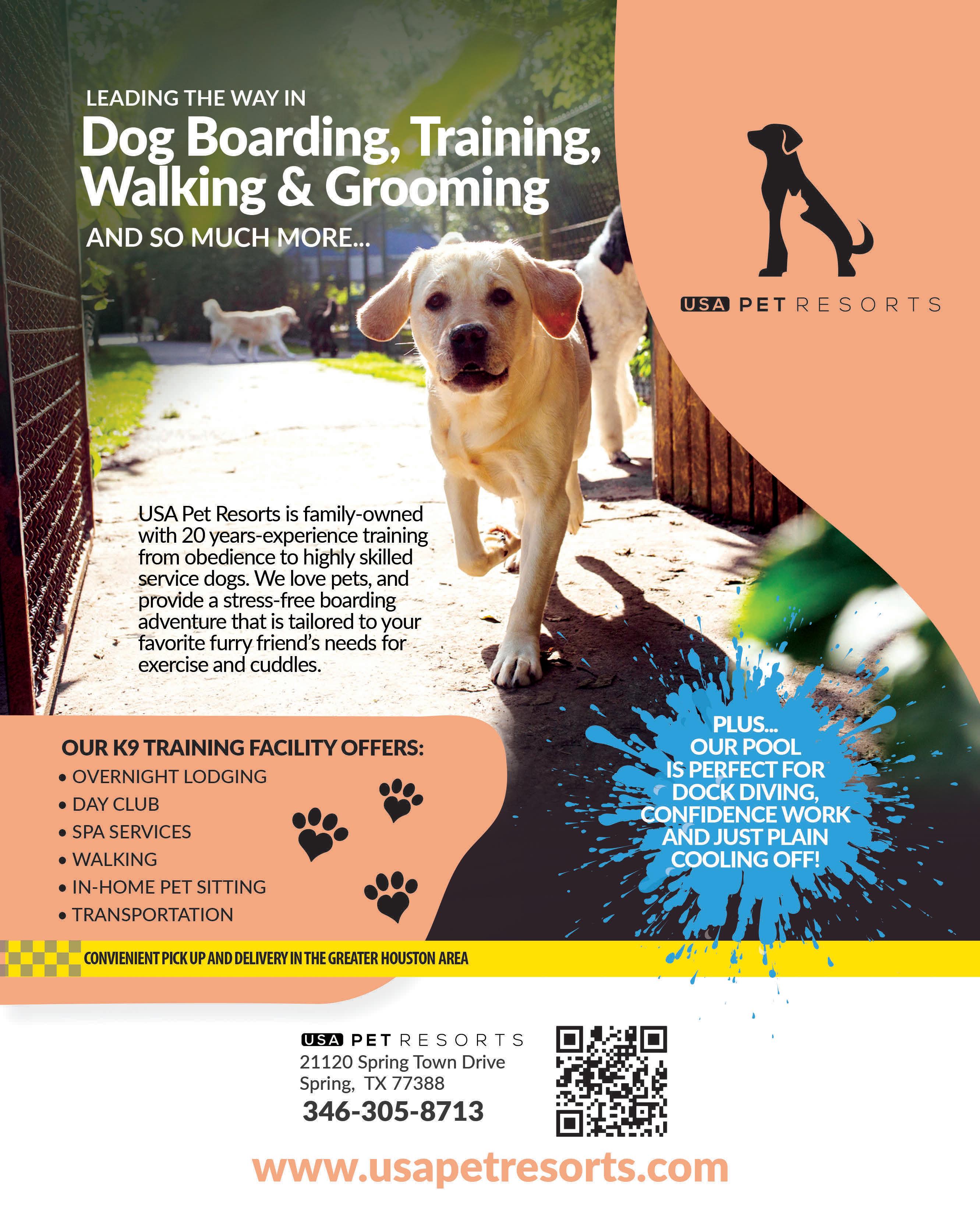
Kellie Geitner is a name synonymous with luxury real estate excellence. Kellie attributes her success to her passion for working with people, and her ability to consistently maintain a service-oriented philosophy while keeping clients apprised of the ever changing market.

No doubt, Kellie’s dedication to the industry is evident from the multiple honors and awards she has accumulated during her many years in the business. Kellie’s clients have seen her expertise and experience in action; what stands out the most, however, is the closeknit relationship she forms with each individual with whom she works.
Need help finding that special house you can call home? How about someone to assist you in capturing the top dollar for your present home?





It’s the start of Spring…and Spring Training is top of mind for those of you that may have gotten a pup for Christmas or a rescue dog deserving a good home, or perhaps even if your canine isn’t new to the family, training may be in order. A compliant canine makes for a peaceful home and a healthy, connected relationship with your dog. However, to achieve that compliance, obedience training is a top priority which is why we publish our Annual Dog Training Issue each March.
which incorporates understanding natural behaviors and the science behind learning, positive reinforcement, patience, repetition, and typically, a good mentor to guide you. For the purpose of our feature, that would be professional dog trainers who can assist you on both a private and group basis.
Does your dog need to jump through hoops to be considered well-trained?

Definitely not but what they DO need is to understand and respect boundaries and expectations for both their safety and your sanity! Our cover boy, Cash, owned by Stephanie Bennett of Believe In Dog Training, shows off his skills for our annual training issue. Cash is adept at obedience as well as some fun tricks! Admittedly his mom is a professional dog trainer so he has a "leg up" on training!
In our annual training feature, you'll find tips and advice from local trainers to help you on your journey to a compliant canine. Cover photo: Kem Coan
The topic of animal training could of course fill books…and does…but with limited space, we still try to offer our readers a glimpse into the science, methods and tips of training that can help you and your dog understand one another through a common language and expectations. Personally, I have always been fascinated by animal training of any species. From the otters that perform their hilarious stunts at Sea World to the behaviors taught to animals at the Houston Zoo for veterinary care, each time I witness the animal offering a flipper, blowing a kiss, sticking their paw out for a treat or offering their rump for an injection, I always want to know more. I want to understand how the animal and trainer got to that point of trust and behavior management. One of the highlights of my work career was during a photoshoot with gorillas where the trainer showed me how to ask each gorilla that came to the glass to open their mouth, based on a movement of my hand, and then they would get a peanut through a feeding chute. Having nothing between us but a piece of glass, and looking into each other’s eyes, then asking the gorilla to do something and have them respond was breathtaking. And it’s all from training,
In this issue, we feature local trainers writing about topics including clicker training, crate training, puppy school, choosing a trainer, family involvement in training, handling dog aggression, stages of training based on age, and much more. Plus, as an added treat, we showcase an article about mantrailing. What is that you ask? (I just learned of this sport myself!). Find out on page 42. I hope you discover valuable information in our training feature and be sure to keep this annual issue for future reference when your dog may need a “tune-up” or perhaps you add a new pup to the family.
Also in this issue, we have some excellent veterinary articles including a look at handling health issues with your senior pet by Dr. Julia Spade and Dr. Shea Cox of BluePearlVet.com, plus a fun shopping guide to get you and your pet ready for St. Patty’s Day!
March also represents the beginning of nice weather and the opportunity to get out and about with pets. Soon the famous Texas Wildflowers will be in bloom so remember to get out there and take the best shot of your pet in the flowers and enter our 15th Annual Pets In The Wildflowers Photo Contest with entries starting April 1. For more fun things to do with your pet, check out our news section monthly or visit our online calendar at PetTalkGoFetch.com.
HOUSTON PETTALK MAGAZINE

14781 Memorial Drive, Ste. 510, Houston, Texas 77079 281-556-6560
Art Director: ANDREW BURWELL




“Henrietta”, called DL from her cushy faux fur desk chair and over-botoxed face, “I’ve been thinking” (this is where I should have left the room), “that we need to embrace going GREEN.” Hmf. Well, the fire-breathing dragon actually has an ounce of fun hidden in that spaghetti noodle of hers, otherwise known as her brain. I didn’t think she had it in her, but yes, she might just redeem herself by offering to celebrate St. Patrick's Day. Visions immediately came to mind of GREEN Beer, GREENIES for all, little leprechauns dancing about for my enjoyment and Penelope not participating because according to her, “wearing GREEN makes her fur have an aura of peakedness”. Yes, I can see how the celebration of GREEN could be filled with scrumptious food and beverage so I quickly replied, “Yes mother, that is an excellent idea! I need to think about what to wear, because you know what they say: “The luck of the Irish comes to those who wear GREEN.” DL appeared puzzled as I added, “Plus, the Irish are the authors of my favorite saying: ‘As you slide down the bannister of life, may the splinters never point the wrong way," I retorted over my shoulder as I merrily skipped toward my room to find the most bedazzled GREEN garment in my closet.
But before I could escape the clutches of my tormenter, she said, “Henrietta, what in the dickens are you talking about? What does going GREEN have to do with the Irish?” She is so daft at times. I tried to hide my “you’re so stupid voice” as I patiently explained that St. Patrick’s Day is about everything GREEN, most importantly, the beer.
The next thing that happened was somewhere between tragedy and horror. DL broke out into a fit of laughter, rare as it is, and unfortunately the laughter was at my expense.
“My dear little Henrietta”, (she NEVER calls me that so I know something awful is happen-
ing), “I am not talking about St. Patrick’s Day, I’m talking about being more environmentally conscious and reducing our carbon footprint, or in your case, pawprint.” WTH??? She continues, “I’m sure you’ve heard of being more GREEN, which implies you are wanting the planet to stay GREEN and healthy and you will curb your behaviors accordingly.” For the love of PETE! I knew she was mad but this is soul crushing. I can nearly taste the GREEN beer I’m washing down GREENIES with…but NOOO, she has to rain on every parade life has ever offered.

I slump to my purple beanbag chair in the laundry room. Yes, the laundry room, which should tell you how wretched my life is with no hope of joy as I slave away for this monster, penning my masterpiece of a column monthly. She has no shame.
The monster follows me to the laundry room. “Henrietta, stop this drama. Being kind to our planet is something you should celebrate, not something to be so unhappy about.”
I chewed my paw and tried to find a glimmer of hope. Perhaps going GREEN could be fun, so I ventured, “What does going GREEN en-tail?”
Her eyes lit up as she explained the changes to our lifestyle she was planning. “Well, first, we will reduce our electricity use by using candles at night instead of lights, we will take short, cold showers, we will create a compost pile so each night after dinner, you will sort the garbage, which you are so good at, and place compostable items in a bin. Next, we will reduce food waste by being very selective with our grocery shopping, we will limit takeout and delivery to use less plastic disposable packaging, we will start walking to do our errands
rather than using the car”….at this point I think I fainted. When I heard reduce food and walk instead of ride, I’m fairly sure I lost consciousness. Who could possibly live like this? As I drifted back and heard her droning on, the last thing I remember her saying is that the “creme de la creme would be planting and tending to our own garden for sustainability.” I couldn’t sustain this any longer so I ran for the door and didn’t stop until I was at the Salty Dog. Huffing and puffing, I staggered through the door and found cousins Hortense, Henry and Hilda at the bar. Thank God…I needed to hear the voices of sanity. Well sanity may be a stretch for this threesome but at least they are not trying to steal my entire life’s pleasures.
Hilda took one look at me and said, “Henrietta, what’s wrong? You look like you’ve seen a ghost.” ‘I have,” I replied, “It was me. I’m dead.” Hortense started laughing and so brilliantly pointed out that no I wasn’t dead, I was standing right here. Oh Hortense…there just are no words. Ignoring her, I told the trio my horrific situation that DL was changing our entire life to help the planet and I would no longer have lights, hot water, large choices in food, car rides, or takeout. I mean, this is a total disaster.
As if things could not get worse, I notice Penelope has been sitting in the corner staring at her face in wall mirror the entire time. “Henrietta, I couldn’t help but overhear your predicament. I think reducing your food intake will do wonders for your waistline you lost two summers ago," she smirked. “Oh Penelope, it’s you,” I replied. “I love what you've done with your hair. How do you get it to come out of the nostrils like that?” She mumbled something about hairspray and made her way to the door as I called, “And, you should do your part on going green, stop breathing oxygen and save a tree!”
I turn back to the group and Henry says, "Well, we aren't "going green" at our house. Tonight we are going to ride go-carts." Hilda chimes in, "No, us neither. We are going to enjoy our hot tub tonight with some margaritas." Ouch. And then Hortense adds, "Not to make you feel bad Henrietta, but we are getting Chinese takeout tonight, you know, the one you love with the cute little oyster pail boxes." I can't take this anymore. I slump out the door and head towards home. The only green I'm going to be is GREEN with envy!
Henrietta Illustration by Jim Tweedy, Colorizing by Desiree Lonsway








Chefs for Paws 2023 took place on January 15th at the C. Baldwin Hotel, benefitting Rescued Pets Movement. The annual event featured a spectacular eight-course dinner created and donated by celebrated Houston chefs/restaurants, along with a silent and live auction. The delicious af-


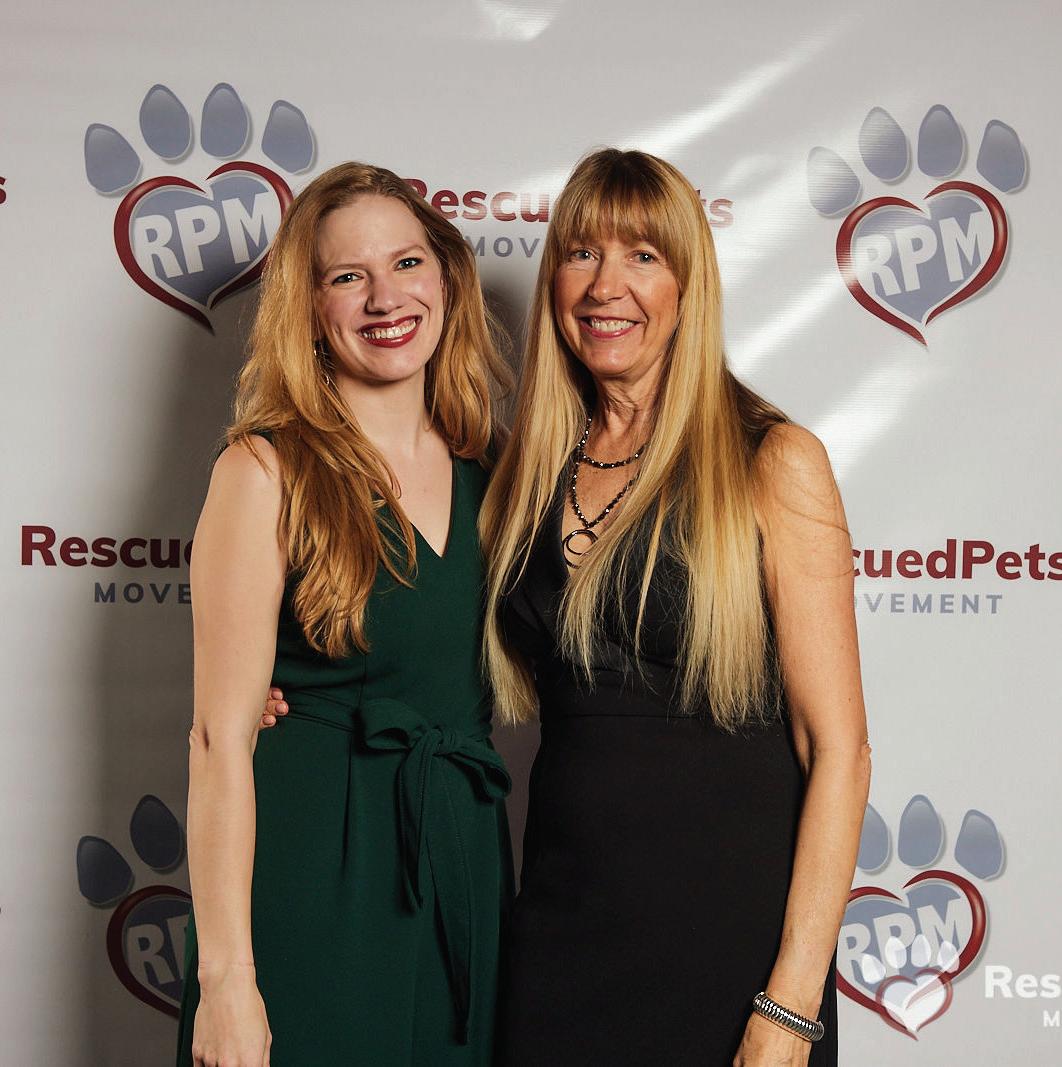
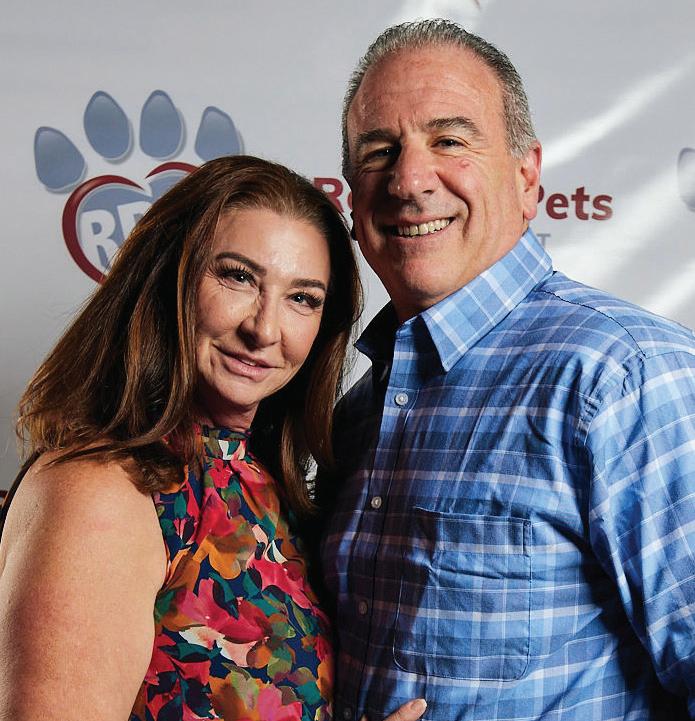

fair netted more than $80K to support the continued life-saving work of RPM, who celebrated the rescue and transport of more than 77,000 homeless pets since their founding in 2013. For more about RPM, visit RescuedPetsMovement.org. Photos by Pam Ashley Photography.






On March 11th at Powder Keg, bring your friends, family, and pups and enjoy a dog-themed day of fun that you and your pup won’t ever forget, including a Treat Toss judged by local and pup celebrities, a Diggin’ for Gold competition, local beer, Irish coffee, food trucks, vendor market, dog adoptions, prizes, and more! It’s a great way to have a fun-filled day while also saving lives! The event is free to attend, but your registration is required for entry and there are drink/contest tickets available for purchase. Plus, the first 350 beer/combo tickets sold will receive a free
commemorative glass and the first 500 people will receive a free swag bag upon entry!
Find event details and secure your spot at HoustonPetsAlive.org/stpawtricksday2023.


Proceeds from St. Pawtrick’s Day will benefit Houston Pets Alive!, a leading local animal rescue whose mission is to save the lives of at-risk companion cats and dogs and find them loving homes.


All ages are welcome to this event, but you must be 21+ to purchase drink tickets.
Join Barrio Dogs for their 13th anniversary celebration! They are celebrating in conjunction with Pedal for Paws, a popular bicycle tour of the East End's historic and culturally-rich neighborhoods.

The theme for this celebration is milagros. The word milagro in Spanish means “miracle” or “surprise” and people use milagros as symbols to wish others good luck, good health, and hope for the future. For us, milagro not only means hope but also gratitude for the kindness, support and good luck that has kept us going since 2010. We hope you will join us in celebrating.
Sign up early for Pedal for Paws and receive a discount! Runsignup.com/Race/TX/ Houston/BarrioDogsPedalforPaws. Get details at Barriodogs.org/PedalForPaws.
» 10AM to 12:00PM - Pedal for Paws
» 12:00 to 5:00PM - Celebration
» Bohemeo's - 708 Telephone Road, HTX 77023

It's time for our longest running contest (15 years!) in celebration of the beautiful Texas Wildflowers, sponsored by Sunset Animal Hospital. As the flowers begin to bloom in March and continue through part of April, be sure to take your pet(s) on an outing and capture a fun photo and enter our 15th annual contest (no humans in photos please). Entry is from April 1 to April 15, public voting is April 16-23 to select Finalists. Sunset Animal Hospital will select the winner, who will receive a $200 certificate for services at Sunset. We are always impressed by the amazing entries and appreciate your creativity!
To enter visit HoustonPetTalk.com or our FACEBOOK page beginning April 1 and click the link to the entry page and upload your photo. Be sure to include your pet's name. If you are a professional photographer, please note your entry as Professional Division. The winning photo and ALL entries will be published in PetTalk's June issue!

Sunset Animal Hospital is located at 2959 SW Freeway and is open 24/7 offering top quality medical treatment for your pet. Thank you Sunset for your generous sponsorship! Learn more about them at SunsetAnytime.com.


The Houston Humane Society invites you to the most RUN-derful event of the year. The 41st annual K9 Fun Run will kick off March 25th at MacGregor Park. Bring the whole family to enjoy a morning jog through University Oaks that will benefit Hous-
ton's homeless animals. Funds raised through this event will benefit the 50,000 animals that receive shelter, veterinary care, and life-saving programs at Houston Humane Society. Be a part of Houston’s oldest dogwalk by visiting www.HoustonHumane.org.
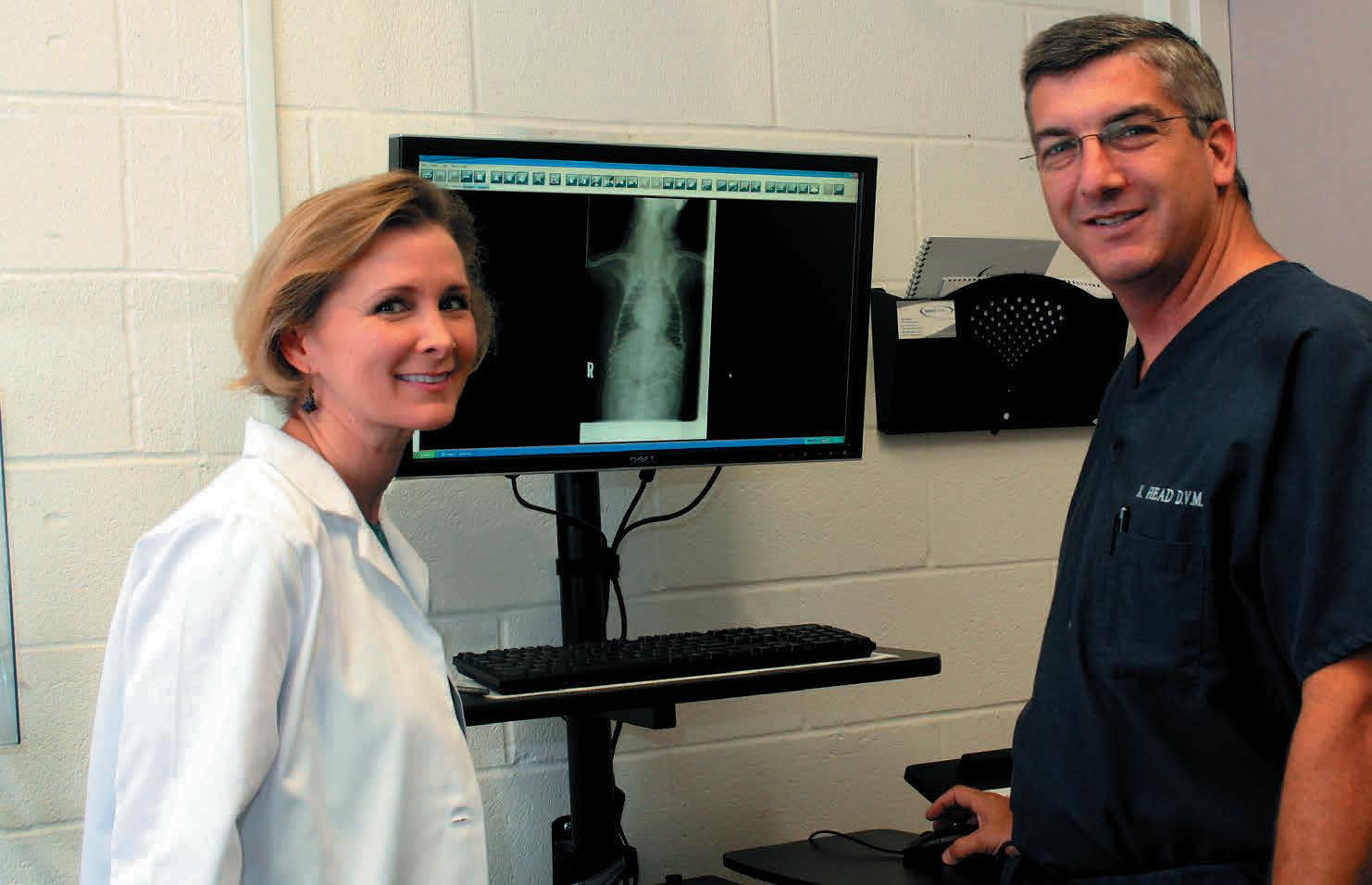
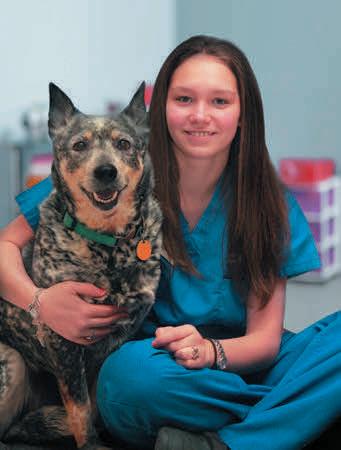
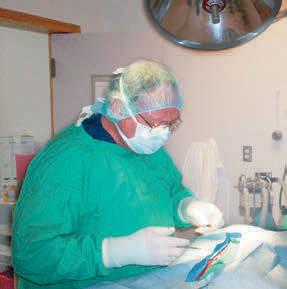
HOUSTON – Houston dog and cat owners are now required by city ordinance to microchip their pets. BARC, the City of Houston's Animal Shelter and Adoption Center, is reminding the public that the year-long grace period for enforcing the City’s new mandatory microchipping requirement ended February 1, 2023. On January 19, 2022, Houston City Council unanimously approved updates to Chapter 6 of the City's Code of Ordinances related to animal welfare, including mandatory microchipping.
This change replaced the previously used license tags for all owned cats and dogs with a microchip, making it easier to return lost pets to their owners. Now, animal enforcement officers can reunite lost pets with their owners in the field, bypassing the need to bring them to the shelter for intake and care.
“BARC knows you love your pets and want to make sure if they are ever lost or stolen, they can always come back home. Microchipping can make that happen. And it’s easy and inexpensive,” said Greg Damianoff, BARC

Shelter Director. “Take your pets to BARC’s low cost wellness clinic or your personal vet, who will implant the microchip and explain how it works and how to register your information on HoustonBARC.com. That way, an animal welfare organization that finds your pet can scan their microchip and arrange for their safe return.”
Microchipping your pet is now part of a three-step process to completing a pet registration with the city. The City of Houston Municipal Code requires that anyone who owns, keeps, possesses, or has control of a dog or cat four months of age or older must have his or her pet registered, vaccinated against rabies, and a registered microchip. Residents may also speak with their veterinarian or utilize BARC’s wellness clinic for more information on how to microchip their pet. Find out more information at HoustonBARC.com. To read about the process of microchipping, visit the American Kennel Club's site for an informative article:: AKC.org/ expert-advice/lifestyle/howdo-dog-microchips-work.



1. @Coffeethedoodle don’t expect too much from me in 2023! #Doodletales
2. @Jones_fids looking back at 2022….There have been so many happy memories and even some sad ones.
3. @Bailey_and_gracie_the_tzus happy new year and welcome to 2023!! We are definitely running into the new year with lots of excitement! Wishing all our ig family a beautiful new year, full of everything you’ve ever wished for and more! Are you making any resolutions for the new year?

4. @Thortherubycavalier our mom is going
Is there anything cuter than your pet? Of course not! We agree, so we make it easy for you to prove it...PLAY with us on Instagram and look for our themed contests. You share with us, we share with our readers. Everybody wins! 3 1 2 4 5 6



back to school tomorrow (to teach) and frankly we’re *not* happy. Do you think our puppy eyes can keep her home?! @Thatdogbodhi is always to our photo editing rescue thank you


5. @Ollie.And.Maggie hello everyone! Meet humphry he is our new foster baby. Humphry is 10 years young and full of so much love and cuddles!! He is huge cuddle bug. He loves his treats and his spot on the couch! He does very well in his kennel and sometimes prefers to just hang in it with his door open lol he is low energy although sometimes he gets the skedaddles (the zoomies but for older, distinguished gentledogs lol).
6. @Littleporkieolive look at those cute puppy eyes can anyone tell them no, because we cant!
Offering designer canine accessories that are imported from countries all over the world and throughout the United States, including an exclusive collection of dog spa products that are free of genetically modified organisms and harsh chemicals. Other products include swarovski crystal collars, pet jewelry, designer style dog carriers, high-end clothing and more; all while donating a portion of the sales revenues to dog rescues in Katy and the Greater Houston area.
We offer high-quality third wave coffees, teas, specialty beers, wine, pastries, charcuterie (Italian Salumi) boards and other sharable options. Enjoy a snack while your furry friends indulge in tasty treats from the upscale dog “PUCCI Barkery”. The 2,000 square foot back features live music right on the LaCenterra Lake, as well as a fenced Bark Park for the puppies.



COME VISIT WITH YOUR PUP ON OUR BEAUTIFUL BACK PATIO WATERSIDE!



PetTalk would like to give a big welcome to a new sponsor, B-Pets, and introduce their new pet inspired designs in the B-Pets eco-friendly product line. Just released into Houston area stores, their products turn 100% non-toxic paper pulp that has been transformed using chemical-free practices into ergonomically designed pet products. These highly durable yet lightweight products range from their B-Snug pet beds and B-Handy Kitty Litter scoops to B-Tidy play mats and even a B-Remembered Plantable Pet Urn. All B-Pets products are 100% organic, non-toxic, biodegradable, recyclable, and compostable. And,l, since they're disposable, they’re hygienic. There's little risk of bacteria buildup, odors, or polluting your environment with any dirt or debris your pets might bring. These unique products are also easy to transport or store anywhere.
B-Pets believes that being green doesn't have to be hard work. That's why they offer a wide variety of eco-friendly pet products that make it easy for you to do your part for the planet. B-Pets is committed to sustainability

while reducing their environmental impact on future generations. Through their dedicated efforts, they used their knowledge along with well thought out ergonomic pet product designs to eliminate waste and leave a clean, healthy environment. Whether you're looking for a more convenient way to clean your kitty’s litter, or you just want to make sure you're using products that are kind to the earth, they've got you covered. Learn more about B-Pets products or to purchase products online, visit Bpets.pet.

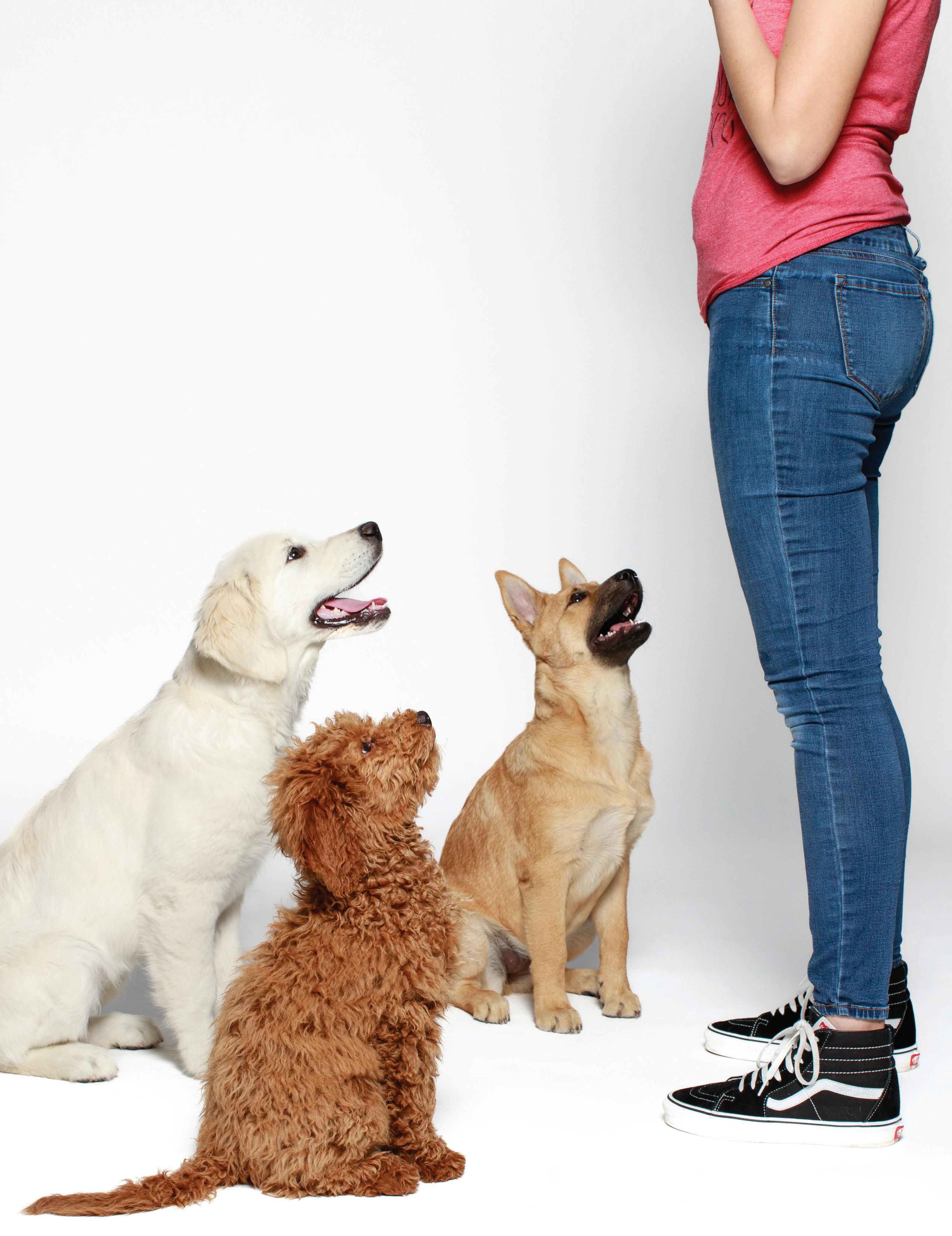
 Intro By Michelle Mantor, Opening
Intro By Michelle Mantor, Opening
Perhaps the number one stress factor for dog owners is their dog’s behavior. Whether it’s housesoiling, aggression, pulling on the leash, stealing food or destroying shoes, it’s all paramount to an untrained “tornado” wearing four furry paws.
The need for training our dogs is most likely stating the obvious but what you may not know is the tremendous strides made in the science of dog training. From positive reinforcement methods to understanding the canine social make-up, the world of dog training has progressed nicely into the 21st century with studies from the last 30 years offering us ideas as to how we should interact with our dogs.
Remembering that dogs were “domesticated” into our lives is a key element. The responsibility rests upon our shoulders to understand their world when we are asking them to live in ours. Because we owe it to this
species, Canis Familiaris, to not expect something from them that they don’t understand, the fact that dog training has progressed to a deeper understanding of their behaviors, learning patterns and communication elements is a call to pet owners to embrace, learn and deliver on our commitments.
Houston boasts many knowledgeable, experienced trainers and PetTalk is proud that many of them are also our advertising sponsors. We asked our experts to give you some brief tips on various training topics. Books can and have been written on the topic of canine behavior so we are merely scratching the surface of training advice in this feature but we invite you to enjoy these thoughts and if your dog is in need of behavior modification, please contact one of our authors to learn more about how you can change or manage your relationship with your dog.
Photography by Kem CoanWhether it’s because you recognize that proactively training your dog will benefit your pet and your family for years to come, or you are struggling with a specific behavioral challenge…you are in the right place! Educating yourself about how to choose a Trainer and which program is best for you and your pet, is the ideal place to start. Because, let’s face it, choosing the wrong Trainer or program could set you back more than just time and money.
Trainers vary in their experience, their methods and ideals. Ask questions that can help you understand more about the Trainer. Also, keep in mind that it is best for a dog to be trained by multiple people, making the transfer of training back to your family smoother once the program is finished.
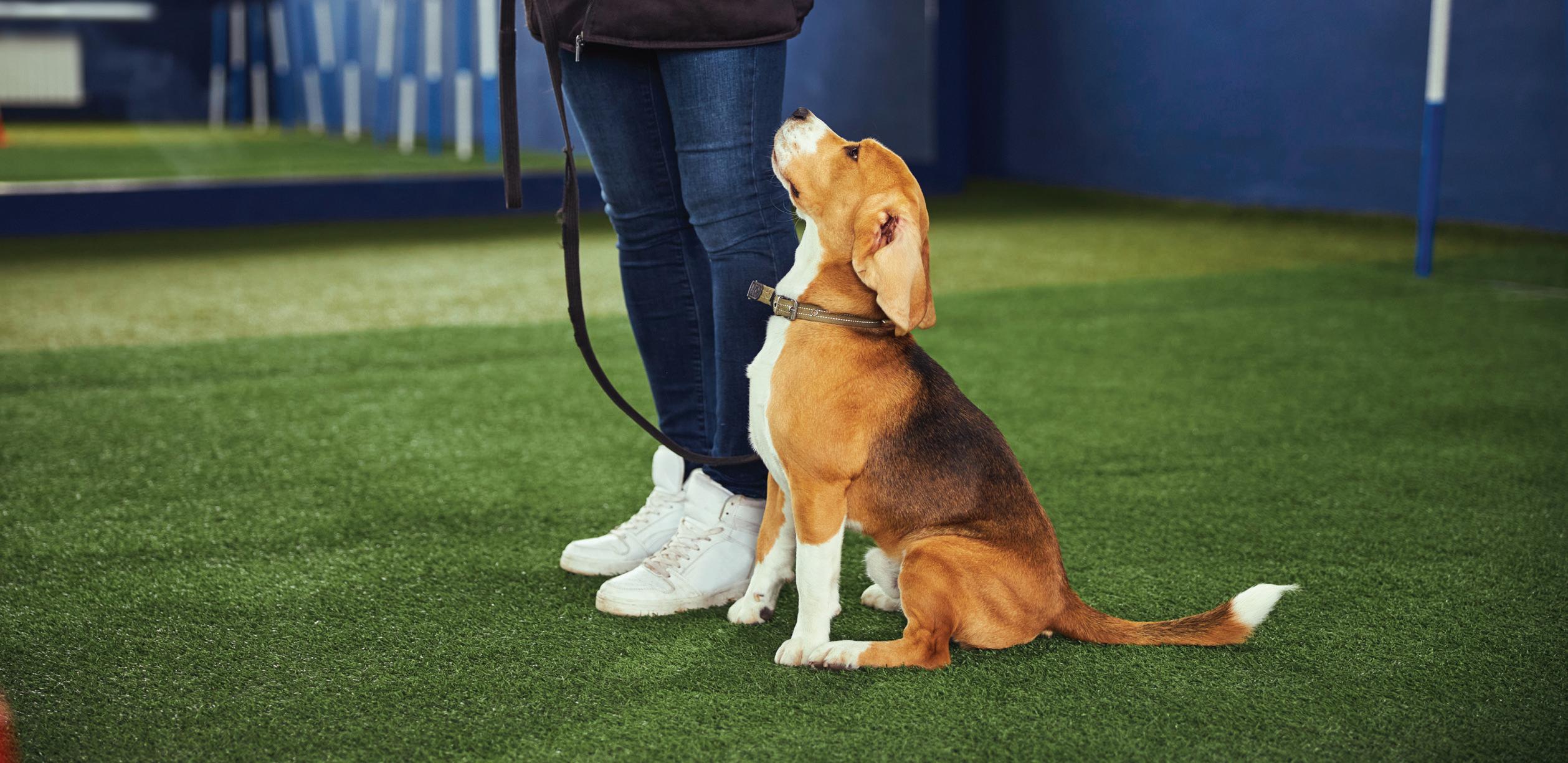
The training program that you choose is equally important. A variety of factors should be considered, including but not limited to, breed, age, past training history, budget and most importantly the behavioral goals of the family.
The highest demand is often for overnight options, or Stay & Train’s, where the pet stays at a facility for a specific amount of days. They
By Training Staff at Meadowlake Pet Resort 2 Locationsare an ideal option for people who need more comprehensive training and do not have the time to do it themselves. They are usually offered in varying lengths from 5 days to 30+ days. The longer the length of time that the trainers have the dog in their care, the more reliable the results will be and the more behaviors can be taught. These programs are great not only for basic obedience, but for specific problems like separation anxiety, reactivity, confidence building, off leash training, and more. Make sure to ask about how the training will be transferred and if there are continuing education options or resources to help you succeed once back at home.
Another option is Private Lessons, which are one-on-one sessions with a Trainer, typically offered once per week for about an hour. This is perfect for the client who wants to learn how to train their dog themselves. This method requires a huge time commitment at home and usually results in slower progress. Group classes are a very common and inexpensive option but come with significant obstacles for dogs who haven’t been through an obedience program previously. Distractions are usually at an all time high which often results in the dog
losing focus. Reactive dogs (towards people or other dogs) can be dangerous in these settings and their behavior could potentially become worse and teach the other “students” bad behavior. And because it is a group setting, the Trainer must work at the pace of the class, leaving behind clients or dogs that are not ready for the next step. However, classes are a fantastic option once a dog has basic commands mastered. Then, the class environment becomes a perfect place to increase reliability with distractions, distance and duration as well as build new behaviors onto the ones already learned. The pace of the class is more relaxed and is a fun way to meet dog owners like you.
Meadowlake Pet Resort proudly offers a team of Trainers, multiple options for programs including Stay & Trains, Private Lessons and Post Graduate Classes and a variety of choices for training tools and methods. Contact Meadowlake for a FREE Training Orientation today where we will discuss all the above and determine the best program to reach your goals and improve the relationship between you and your pet!
Aggressive dogs are not always acting aggressive, so it can seem harder to correct these behaviors, but there are steps to repairing your dog’s confidence. Dogs who exhibit aggression, whether it’s dog vs. dog, dog vs. people, or resource aggression, it is almost always due to a lack of confidence within the animal or lack of confidence in their relationship to their owner. Establishing yourself as the pack leader with your dog is job one. Building confidence in your dog is the key to a well socialized K9. Also, it is important to understand that you need to develop a relationship with your dog through consistent routines, positive reinforcement, and an exercise program.

If you lack constructive communication skills with your dog, the problem will get worse. When I say constructive communication, I mean helpful obedience commands (sit, stay, and come). These are tools for your dog to help anchor them in the moment, while navigating novel experiences so that they
don’t feel the need to adlib their behaviors. As the dog owner, you may be unintentionally encouraging a behavior by your response to it. When you notice signs of possessive behavior when others are in close proximity to you or their food, it is important to take note so that you can relay this information to your trainer and they can help you understand how to not unintentionally encourage your dog.
The foundation of my training philosophy is building confidence and establishing three key areas, boundaries, exercise, and nutrition… the three-legged stool.
» Boundary establishment is the first area where I start my conversation with dog parents. If a dog does not know their reach in your home, they will assume that the whole kingdom is theirs.

» Intentional exercise is the next area that is lacking in most dog’s lives. Learning to properly walk on a leash can be pivotal in guiding your dog onto more desirable behaviors on a daily basis.
» Proper nutrition is often overlooked as a
root cause of behavior problems, but food is an important resource and an avenue of helping your dog choose behaviors that create harmony.
Aggression in dogs can take on different outward signs. A puppy or young dog may exhibit antisocial behavior, or food aggressions that can be easily addressed. In older dogs, this may take more work and time. You must acknowledge the reality of the life experiences that your dog may have gone through, and previous, often unknown trauma, into the training program. Expectations must be tempered depending on the age and background of the dog. In either case with young or old dogs, moving the needle of unwanted behavior is achievable.
You need to earn your dog’s trust, loyalty, and respect before your dog will look to you as their leader. You can do this by giving the dog rules, clear boundaries, and expectations. Once your dog sees you as their leader, the unwanted behavior will subside.
Puppy parents in Houston are fortunate to have several choices when it comes to training their new furry family member. Drop-off day training programs for puppies are becoming increasingly popular. To be clear, day training is not the same as board and train programs. Board and train programs are not recommended for puppies. In Puppy Day School programs, the owners drop off their puppies in the morning and pick them up in the afternoon. These programs can be very valuable because early puppy training is critical! The foundation built during puppyhood will help shape your adult dog’s personality and temperament and can help prevent behavioral issues before they ever begin. The American Veterinary Society of Animal Behavior states that “The Primary and most important time for puppy socialization is the first few months of life.” Technically puppyhood ends, and adolescence begins, at approximately 5 months of age. Time is of the essence and the clock is ticking!
However, caveat emptor - buyer beware! Not all dog training is created equal, especially when it comes to puppies. The type of socialization and training your puppy receives can have an enormous impact on the rest of your dog’s life and can make all the difference. No matter where you take your puppy for training, you must do copious amounts of research and ask loads of questions!
The following items are important topics to discuss and essential questions to ask before dropping your puppy off at any day training school:
» How many vaccinations are required for puppies to begin training? To take advantage of the critical learning period in a puppy’s development, the AVSAB suggests socialization should begin before puppies are fully vaccinated. However, proof of at least the first two sets of vaccinations should be required before being exposed to other puppies. Additionally, training centers that offer puppy training should have strict protocols regarding daily cleaning, disinfecting, and overall safety. Always ask to take a tour so you can see (and smell) for yourself!
» What kind of training methods do you use and what certifications do your trainers have? This can be tricky because dog training is unregulated, and anyone can claim to be a professional. It’s important to ask how the puppies are reinforced, and if any form of punishment is ever used. Methods that focus on dominance, intimidation, or fear, are outdated, and can do more harm than good. Tools that cause pain are never necessary, no matter what. Make sure you understand and are completely comfortable with how your puppy will be trained.
» What will your puppy’s schedule look like during the day? Puppy day school should not simply be daycare for puppies; instead of a free for all, it should be very structured. Puppies have different needs than adult dogs and their days should be designed as such. Curriculums should include basic manners training, playtime with appropriate playmates, exposure to novel stimuli, confidence building, handling, potty training maintenance, and most of all frequent rest! Additionally, puppies should have at least one full day of rest in between school days.
» Is there a limit to how many puppies can attend per day? How many puppies per trainer? Every puppy should be treated as an individual and training plans should be customized for their specific needs. To ensure necessary individual attention, the
 By Stephanie Bennett CPDT-KSA Owner, Believe in Dog Training
By Stephanie Bennett CPDT-KSA Owner, Believe in Dog Training

ratio of trainers to puppies should be kept very small.
» How will your puppy’s progress be communicated to you? After any day training program, you should receive a report card with details of the day’s activities and progress. What went well? Did anything not go so well? What was your puppy’s favorite activity? Who were their best friends?
» How will you be taught to train your puppy? Day school for puppies is a terrific way to take advantage of the early socialization period. However, it is of the utmost importance that owners learn to train their own puppy! Good training facilities will supply homework assignments and provide group classes to ensure the owner learns just as much as their puppy.
Trusting any facility to train and care for your new puppy is a big decision and should be made carefully. Educate yourself on different training methods and trainer certifications. Every trainer and training center should be an open book and should happily offer tours and answer all your questions. Request to observe training sessions or group classes, study social media posts, read reviews, and ask for references! Drop off day training programs can be enormously beneficial for you and your new puppy but be careful! It is essential that your young puppy have a fear-free, all-positive experience.
Training the family dog is at least as much about training the family as it is about training the dog. If trained behaviors are not consistently and properly reinforced by all family members, then at best training or behavior modification goals will be realized much more slowly, or at worst the desired behaviors will either never take hold or the dog will develop a different set of rules for different family members.
A client once told me that I often used the phrase “number one rule of dog training”, but insert different rules depending on the circumstances. Thus, at times the number one rule was consistency, or timing, or patience, and so on. All true, but none of those are the real number one rule which is: you have to be smarter than the dog.
Being smarter than the dog means a lot of things including recognizing that training is really just a means to form a desired habit. If dogs could talk and you could ask an older perfectly potty trained dog: “Why do you always pee outside?” He would probably look puzzled and

reply: “because I always pee outside”. What we call potty training is really just the formation of a habit best achieved by using a crate to prevent the dog from having the opportunity to relieve himself inside the house. Think of it as an agreement between you and the dog about how you are going to do any number of things like: waiting until released to jump out of the car or go through an open door, or not jumping in order to get attention, etc. Creating a desired habit in the family dog requires shared habits by the human members of the family.
Let’s examine the last example: the family dog jumps on all the family members when entering the home. Being smarter than the dog requires figuring out what the dog is trying to achieve with this behavior. Odds are, he does it to get attention; and, from his perspective it is 100% effective - either he gets positive attention (petted) or negative (pushed away) - either way he gets attention and his method has become a habit. The fix? Teach him a new, more desirable (from the human perspective) habit to get the attention he craves. If he stays on all four feet, you pet him even more than before. If he leaves
his feet, then you disappear back out the door. Wash, rinse and repeat.
So what if one family member does this and the rest doesn't? Best case is the formation of the new desired habit will take longer and will only apply to the one family member that reinforces it, and worst case, the new habit takes so long to form that the family member who is properly reinforcing the new habit gives up.
Put simply, the number one reason (sound familiar?) that training fails is born of unrealistic expectations. A dog is not a car that can be taken to a mechanic and fixed, it is an organism that continues to learn every day - either to maintain newly acquired habits, or to default back to old ones. Consistent and timely reinforcement of the new habits by all family members is the only way Fido will form and retain new habits for all concerned. And that, of course, is the number one rule of dog training.
In weekly conversations with clients, it’s interesting to hear their list of things that their new puppy learned like high five, shake, roll over. Or “He already knows the basics, sit and stay, and he’s only 12 or 15 weeks old.” While these are important concepts, they are just that. And are they actually the most important concepts at this age? What typically follows is how the puppy is driving them crazy with a host of other unworkable behaviors and conduct because they had blind spots, either letting the puppy just “be a puppy” or teaching concepts/exercises with no clear order and or not the real priority.

At 8-12 weeks, I’m highly focused on teaching concepts on how to learn. It builds a positive attitude and is essential in setting the tone for a lifelong desire to learn. As well, it teaches the pup the crucial practice and desire to prioritize and make effort. Molding and shaping this attitude allows you to begin teaching the
pup important relationship boundaries. This is important for keeping your relationship out of conflict from confusing or mixed messages. Social interactions are often emphasized at this age yet highly misunderstood. If you can’t predict the safety and positive outcome of any social situation and it goes poorly or sends the wrong message, you’re doing more harm than good for the puppy. Knowing dog behavior and what you are watching is important to what’s being learned.
The continued practice of learning to learn never really ends. We look to build proficiency through continued effort and guidance, creating life habits. Adding challenges to the game is essential as the puppy continues to demonstrate a good attitude and an understanding of what they’re doing. If the game loses its challenge, they won’t want to play anymore.
The shift from want to over to have to is highly dependent on how you’ve built and completed your early work. Usually, puppies are making a transition to a little more independent thought from 4-6 months. They are by no means adolescents but can start to test boundaries and expectations more. Part of this is biological while the other is highly influenced by the dog owners consistency and clarity in communication and expectations. If we’re staying the course in our leadership, we can easily create expectations and a desire to "want to" in the pups head. This is predicated on the idea that they’re winning, on your terms. Adding rules and responsibilities is highly dependent on the individual pup. There is no specific age, it’s a developmental assessment that gets made just knowing and understanding dogs...when to push and when to pull back.
As the pups move through that period from 6-10 months, we’re really seeing growth and more maturity. We’re adding adequate challenge and distraction to our basics. They’re not babies anymore and usually near that 10 month mark, you will start to see some tween demeanor arise. Here’s where the rubber meets the road. If you’ve done your work correctly, that puppy is going to have a much smoother ride (as well as you) through adolescence. And if you missed steps, taught them out of order, allowed the pup to be wild and or avoided issues, they will rear their ugly heads in full force and life will become a bit of a struggle. If you didn’t properly prepare the pup, you now don’t have the tools needed to deal with whatever breakdowns start to show up.
From 12-18 months, adding responsibility to actions and decisions is in full swing. If we’re still not expecting enough from the young dog, we’re more likely to see behavior issues grow. The adolescent dog's brain is spinning like an Olympic figure skater going for gold. With adequate stimulation and challenge, we’ll keep them steady and confident. We continue to review the things they learned when they just started out as well as new challenges. This doesn’t mean they will be mistake-free in the things they learned when they were 6 months, and it’s our responsibility to hold them accountable for effort and accuracy. You are, after all, looking at the big picture of how you want your adult dog to behave, right?
Mental maturity can be a bit breed dependent but in general, it’s about 3 yrs. of age for most. Dogs between 2 -3 are definitely still learning and maturing but they also have a great foundation underneath them now if we did our basics correctly. We taught and reviewed in a progression that makes sense, consistently over the last 2 yrs. And if we run into training challenges or problems, we have the tools instilled to be able to correct things more easily. If basics were poor or incomplete, then we can’t effectively right the ship.
 The Yin Yang Dog, TheYinYangDog.com
The Yin Yang Dog, TheYinYangDog.com
Separation Anxiety (SA) is an umbrella term used to define a multitude of anxiety related behaviors dogs display when the guardian or attachment figure is absent. This problem is also known as separation related problems (SRP), separation distress, separation anxiety related behaviors, and isolation distress.
The most common reported signs of separation anxiety are excessive vocalization, inappropriate elimination, and destructive behavior when the guardian is away. Less common symptoms include panting, salivation, vomiting, repetitive behaviors, trembling and freezing, restlessness, fear or aggressive behaviors when the guardian is attempting to leave.
It is important to understand that some of the behaviors occurring while the guardian is absent may result from anxiety but may also have other explanations. For example, excessive vocalization could be due to alarm barking as someone approaches the home, destructive behavior could be because the dog is suffering from lack of stimulation, and inappropriate elimination could be because the dog has a urinary tract infection. A detailed assessment of each individual case is necessary to determine the possible cause of the behavior.
There has been a lot of research seeking to understand separation anxiety risk factors. Research has been contradictory with the role of breed, gender, neuter/spay status, and origin in separation anxiety.
Recently some research has suggested that an inappropriate dog-guardian bond can play a role in separation anxiety development. This hypothesis was based on studies of children with separation related problems.

Certified Separation Anxiety Trainers (CSAT) are certified professional dog trainers who have received a specialized mentorship in separation anxiety related problems offered by a renowned separation anxiety specialist with more than 20 years of experience in the field and focus on the training of dogs with isolation distress and separation related problems. These specialists engage in several months of intensive study, high level coursework, and detailed discussion of case studies. In addition, these trainers also have extensive experience
in dog training (positive reinforcement), behavior modification, and counseling.
Separation anxiety distress is successfully treated with a combination of methods. In addition to behavioral interventions focused on impulse control (so to increase tolerance to frustration), detailed plans focused on using systematic desensitization where all absences are carefully crafted and are conducted as long as the dog tolerates them. This means that we use science-based methodology rewardbased techniques to help a dog habituate to guardian absences. Some dogs may benefit
from pharmacological intervention during the training period which would have been discussed with a veterinary behaviorist prior to training. All the training is done remotely via zoom or equivalent technology. This method has proven successful because the trainer can observe behaviors without interfering in the process. It has many benefits including no travel time for the trainer, safety for both trainer and guardian, ability to work with dogs living in remote areas or other countries where training in person may not be possible.
Dog Gone Fun Agility in Magnolia, Texas, offers dog training for EVERY dog sport. There is something for every person in the family and for every dog-type in the family, too! From athletic people and dogs to young people and puppies, there truly are fun activities for everyone at Dog Gone Fun, including people with limited mobility and senior dogs.
In addition to training classes, Dog Gone Fun offers competition events, seminars, and other group activities involving dogs, like Junior Handler Night. Training class categories include Agility, Barn Hunt, Conformation, Dock Diving, Disc, Mantrailing, Obedience, Pet Classes, Puppy Training, Tricks, Rally, Scent Work,
Treibball and Urban Rats. There’s a special set of classes just for Kids and Dogs. All classes are taught using positive based reinforcement methods and more training categories are being added all the time. Check out this variety of options:
1. AGILITY

» Dog Agility is a fast paced sport where handlers direct their dogs off leash though obstacle courses.
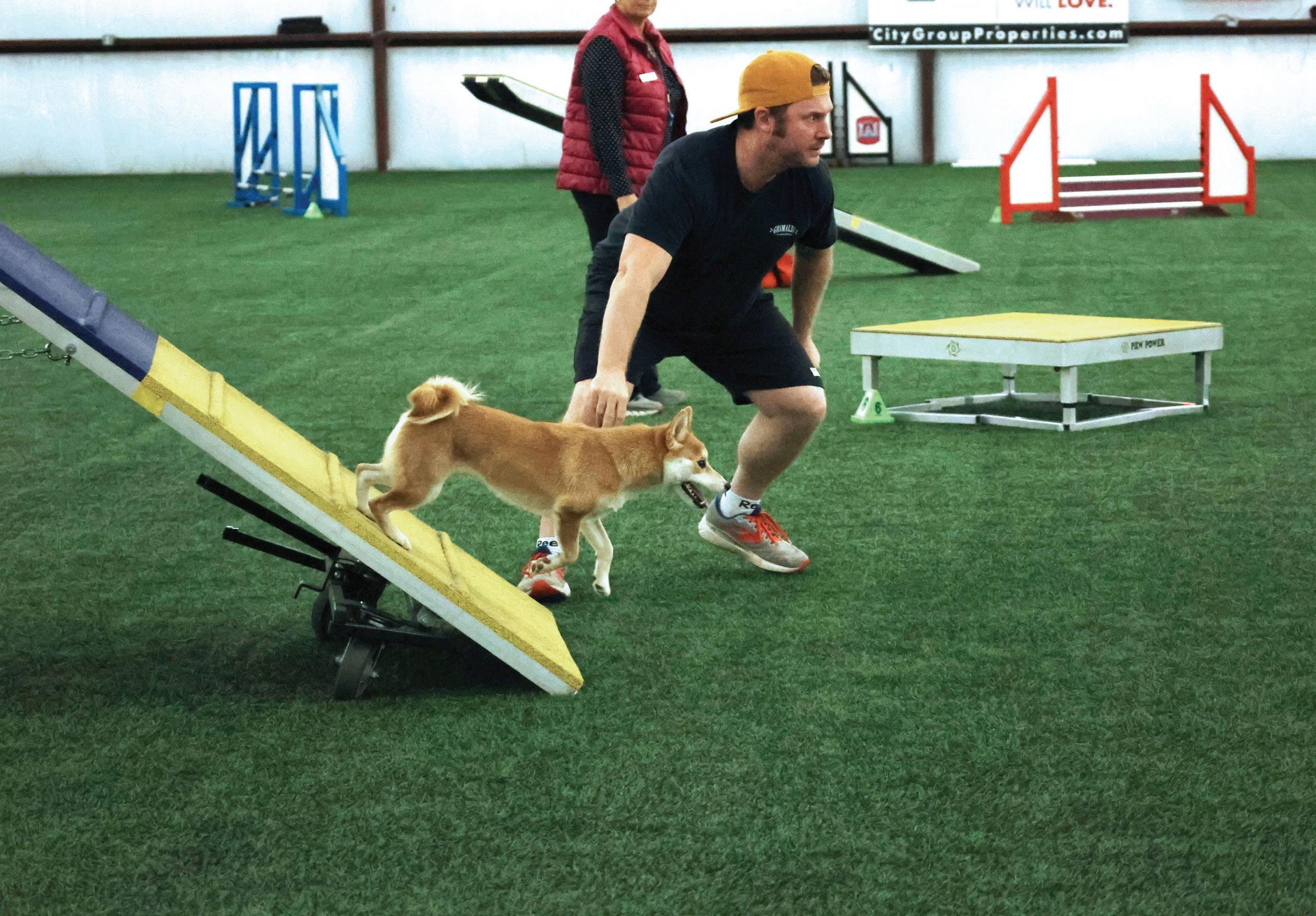
» Agility is great for dogs and humans of all ages! It can give both ends of the leash exercise and mental stimulation.
» There are classes just for fun all the way up to international competition.
» Barn Hunt is a fun activity where dogs use their nose to locate rats (safely enclosed in aerated tubes) hidden in a maze of straw.
» Mantrailing trains dogs to hunt for a hidden person for fun.
» Scentwork is a sport where dogs use their noses to search for different essential odors.
» Urban Rats also involves dogs searching for rats, but in a more urban setting.
» All of these areas of training are confidence building activities for sensitive and shy dogs.
» Conformation classes teach handlers how to effectively present their dog in the breed show ring.
» This class teaches confidence for both handlers and dogs.
» Dock diving is a sport where dogs jump from a dock and see how far they can land.
» It is a great way for dogs to exercise and a pretty fast sport to learn if your dog likes toys and/or water!
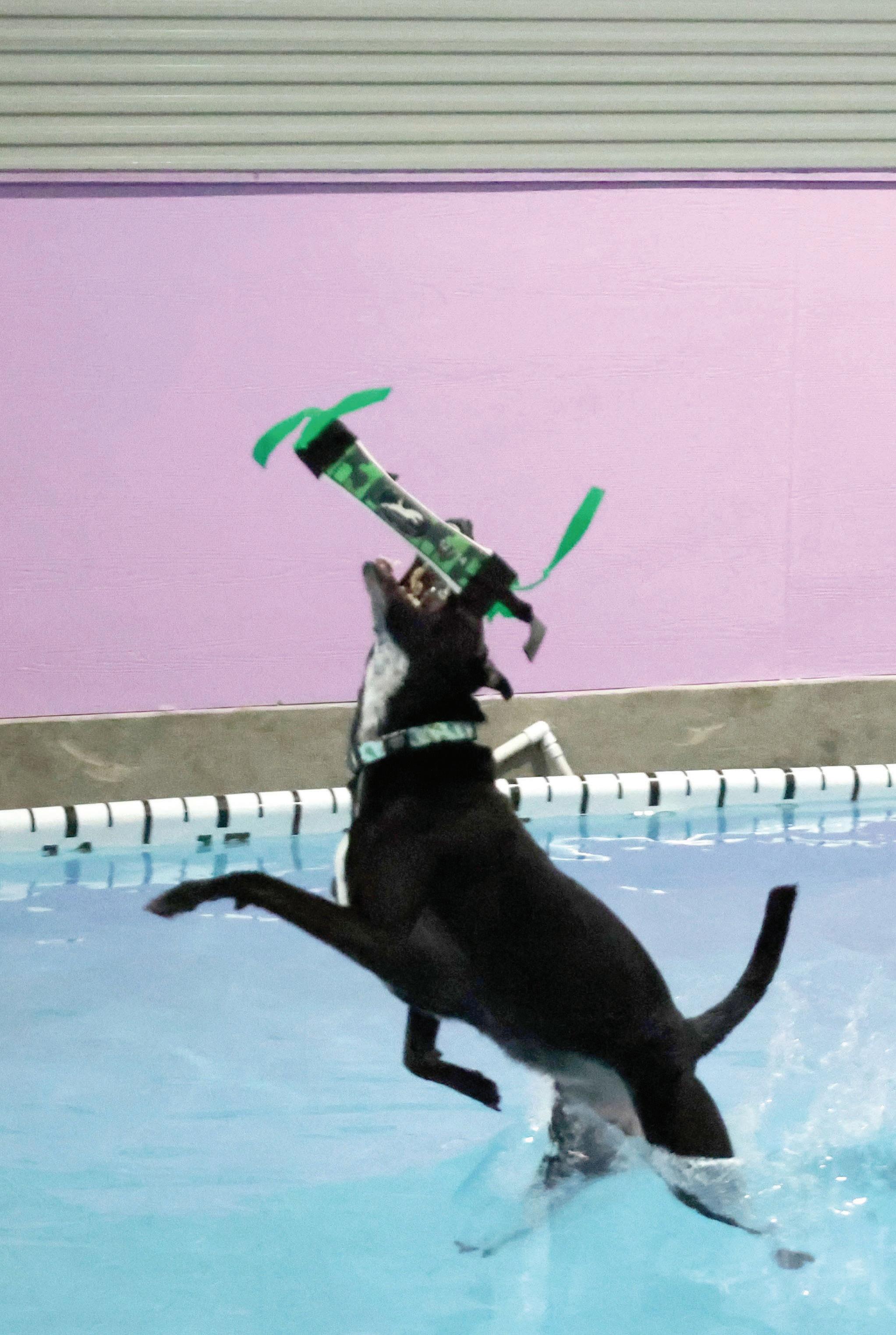
» Super Swimmers is a class opportunity offered for dogs that simply prefer swimming. The Dog Gone Fun pool is indoors and heated.
Several other classes are offered that are somewhat less structured than other dog sports:
» Disc classes are especially fun for dogs that like to chase and retrieve an item.
» Treibball is a dog activity that essentially involves “herding” balls and moving them from one area to another. It has been termed Urban Herding.
» Trick training is a class to teach your dog fun tricks.
» These classes involve teaching puppies and dogs to be well-behaved members of the family.
» There are class levels for basic manners and commands, skills needed for dog sports activities, competition obedience (including Canine Good Citizen) as well as how to just be a Good Family Dog.
» Specialty classes are available for dogs that are reactive or shy.
» This class focuses on teaching children to safely handle their dog, build a special bond, learn responsible behaviors of pet ownership, teach basic commands and fun tricks, and explore the world of dog sports.
» Junior Agility classes are available for kids interested in agility for fun or competition.
» Junior Handler Night is a special event for kids and dogs that involves food and games and lets kids meet other kids who love dogs too!
9.
There are dog competitions every weekend
that include agility trials, scent work trials, and dock diving competitions. Admission is free for spectators! Watch the talented dog handlers and tour the training facility.
10.

Experts are periodically brought in for focused learning and training forums. Topics include dog behavior as well as innovative training techniques in specific dog sports.
Dog Gone Fun Agility is Texas’s largest premier dog training and event center! The
facility features two turf agility arenas, an indoor dock diving pool, and a training building. The instructors have extensive dog training knowledge as well as a passion for helping you and your dog learn.
Let Dog Gone Fun help you find the perfect classes and activities for you and your dog. You won’t regret it!
Find more detailed information and schedules about classes at: DogGoneFunAgility.com.
Do you ever wonder why different dogs are easier to train in certain behaviors than others?
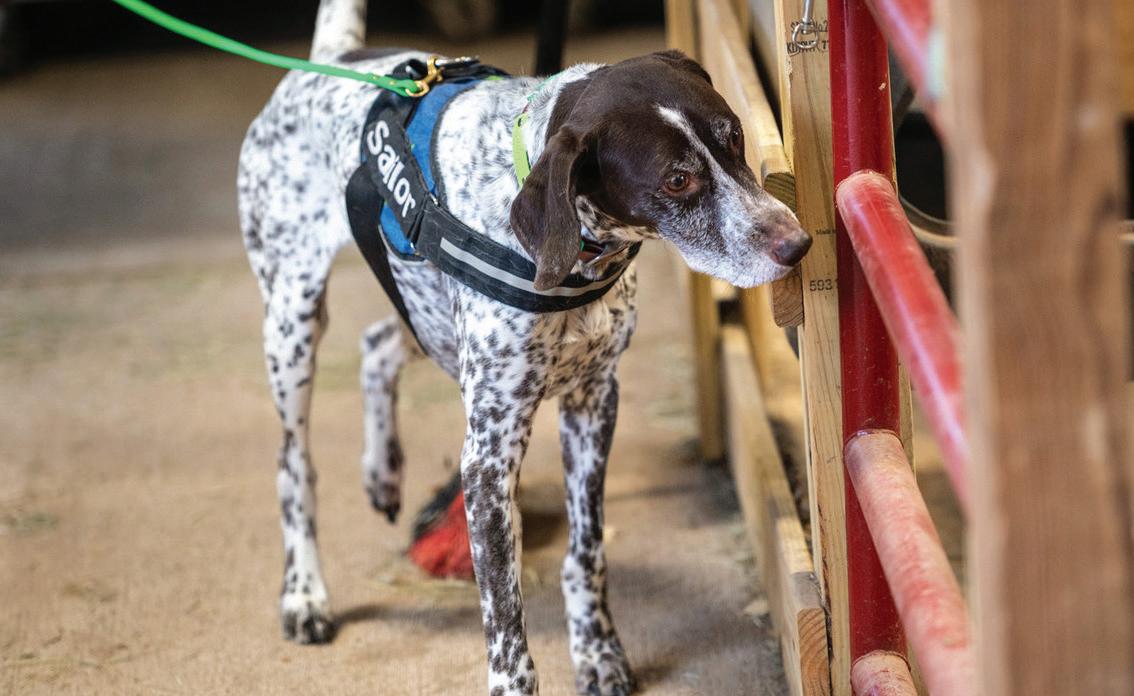
Genetics are involved. Your dog’s genetics have an influence on your dog’s behavior and plays a role not only in what inborn skills he might have, but in who he is – whether he is friendly or reserved with strangers, a high-drive athlete, or a snuggly couch potato.
After thousands of years of selective breeding in the dog world we’ve been able to develop specific lines of dogs who are consistently driven to retrieve things, herd sheep, guard our homes, track rabbits, hunt by scent, sight or protect livestock, and so on. These behaviors come naturally without effort like a pre-existing genetic blueprint.
Understanding that genetic component influencing your dog’s behavior will help you be more effective in creating a training
PawsAllInDogTraining.com
plan for your dog. For example, as a Nose Work Instructor, I know that different breeds have different searching styles. My German Shorthaired Pointer, Sailor, is a hunting breed. His breed is “an all-purpose gun dog suitable for both land and water” (Wikipedia). “The GSP was bred to point, retrieve, trail wounded game, hunt both large and small game, furred and feathered and to work in low or heavy cover as well as water. The dog was also intended to be a family companion”. (German Shorthaired Pointer Club of America)
As a hunting breed, my dog’s preference is to move great distances and air scent. He uses his nose more than his eyes naturally when he is searching. This natural trait helps him follow odor and not guide his decisions by just checking the objects presented in the environment. So as you might expect my dog loves to play the game of hunting odor.
Another one of my dogs, Tango is a Scottish Terrier mix. Scottish terriers were originally bred to be hunters of vermin, specifically badgers. “The Scottie working style has been described as efficient and businesslike, and their aloofness toward strangers makes them excellent watchdogs”. (American Kennel Club)
In this case, my dog Tango, is an active high energetic dog that thrives on training tricks and playing the sports of Agility and Flyball. His aloofness towards strangers is a trait that I always take in account in my training so he can feel comfortable in the presence of different people.
Every dog is different, and every dog has a genetic background that they bring with them. Knowing and understanding why your dog offers certain behaviors naturally will help you be a proactive pet parent by defining a training plan adjusted to your dog’s specific needs.
When you are out at the dog park or on a walk with your pup, you may see other dog owners giving a command to their pet and using a device that makes a clicking noise when the pet responds with the desired behavior. The click is followed up with a treat or other positive reinforcement for the behavior. This device is called a clicker and is used for marker training, otherwise known as clicker training.
The clicker device is a metal strip inside a small plastic box that makes a distinct clicking sound when pressed. During training, dogs associate the sound of the click with positive rewards that mark the behavior (such as sit, down, etc.), thus teaching the dog to continue offering the good behaviors in exchange for a reward.

To teach a dog the meaning of the click, a treat is given immediately after clicking, which is called “loading the clicker”. By loading the clicker, this is the first clue to the dog that a treat will follow a click. Next, you can progress to asking for a behavior, such as sit, and as soon as the dog complies, click and treat. The timing of the click is essential - it must be immediate to mark the exact moment of the behavior. Once your pup catches on, you do not have to give a treat every time, perhaps intermittently after the behavior is learned to
reinforce, but it’s very important to use strong rewards a lot during initial training stages. One very important element of marker training is to also use praise. The treat is a reward but additional praise and affection is also a valuable tool. Eventually after your dog has mastered basic commands, you can move to more advanced training by simply clicking for small steps toward the behavior and work the dog
toward the final, completed behavior.

Once you get started with the clicker, you will discover many opportunities to use this tool in shaping your dog’s behavior including teaching basic obedience, tricks, dog sports, or even to modify unwanted behaviors such as reactivity or anxiety. To get started, there are many online tools including videos and articles to assist you in working with your animal!
Adding a puppy to your family is a wonderful experience! Be sure you begin teaching your puppy appropriate behaviors right away.
1. Begin to crate train your puppy. Be sure the crate is the correct size - get an expandable crate if your puppy will grow into a bigger dog. Have a " reward toy", like a stuffed Kong that is only given in the crate.

2. Play games where you get the puppy to chase you. Call his or her name in a happy voice, squeak a toy, have treats - run away from the puppy. Do not chase the puppy; always get him or her to chase you.
3. Feed a premium food and treats. Limit the treats to positive reinforcing but do not give them randomly. Puppy should always earn a treat by doing some simple task.
4. Keep your puppy where you can see him or her at all times. If you cannot watch the puppy, even for a phone call or a shower, put him or her in the crate. This avoids potty accidents and inappropriate chewing.
5. As soon as your puppy is fully vaccinated, take him or her on outings to different places. Allow opportunities to meet people and see places in a safe way. Puppy Preschool and supervised play
groups are great places for your puppy to learn.
Mantrailing is a sport training dogs to find people by following their unique scent trail. All dogs have a natural ability to hunt and therefore Mantrailing provides them with an outlet to do this in a safe, controlled and constructive way. At Dog Gone Fun Agility, we teach them how to harness their amazing sense of smell and turn it into a super fun activity to do together as a sport.
Our approach is all positive reward based training and is accessible to all dogs regardless of age, breed or disability.
Dogs are always worked one at a time which means even dogs with confidence and reactivity issues can take part. Mantrailing also relies heavily on teamwork and it’s important to have a line of communication between you and your dog at all times. Therefore, dogs are kept on a long-line throughout the training session, meaning that even dogs with a poor recall can take part.
Mantrailing is also a low impact sport, which unlike some dog sports, means there is less pressure and stress on your dogs joints allowing puppies, older dogs and those who need more careful exercise management to participate in the fun.
You and your dog need no previous training to get started in Mantrailing. Your dog doesn’t even need to know how to walk on lead. The progress of each dog is based on their natural ability for the game and finding the best reward for that dog.

Dogs with no training are welcome to come, as are dogs from other sports. Mantrailing allows dogs to use their nose in a natural way to find their hidden person.
You can get started on your Mantrailing journey with a Mantrailing Global Instructor. The instructors are based across the USA, UK, Ireland, and Canada.
An introduction workshop is the place to start. After you’ve attended your introduction, you’ll be able to attend progression classes
and workshops to continue developing your skills with any Mantrailing Global Instructor in the world.
All you need to get started is a harness which fits your dog, and a long lead (22 to 33 ft). Your instructor will help you with the rest.
You can find details on instructors at MantrailingGlobal.com or Mantrailing-USA.com.
To learn more about the classes here locally at Dog Gone Fun Agility, go to DogGoneFunAgility.com and click on Classes/Mantrailing.
Mantrailing Global has supported Mantrailing Instructors across Europe and beyond since 2017, teaching the sport of Mantrailing to pet dog & owner teams.
Mantrailing Global was originally born as 'Mantrailing UK' after Founder, Lisa Gorenflo, discovered Mantrailing in Germany and quickly became hooked. Upon returning home to the UK, she began searching for this kind of training but was disappointed to not find anything
 By: Kathryn Jones, Dog Gone Fun Agility, DogGoneFunAgility.com
By: Kathryn Jones, Dog Gone Fun Agility, DogGoneFunAgility.com
available. There was only one option: to start a Mantrailing club. At the time, Lisa already had an established dog training business so she began introducing Mantrailing as a new service to offer her clients, all the while continuing her training in Germany gaining her status as a Certified Mantrailing Instructor.
As it received more and more interest, Lisa saw the benefits that Mantrailing was having on the participating dogs and their owners. She then made the decision to begin offering Mantrailing Introduction courses to her already thriving dog-training business. Very quickly, Mantrailing took off as a new dog sport and began to take up all of Lisa’s time! Not only did she have pet owners travelling across the country to participate, but other dog trainers became addicted and wanted to offer it to their clients also.
Eventually, Lisa made the decision to coach and train new instructors which developed into the esteemed Mantrailing UK Instructor course, or as it stands today, and has spread internationally across the globe.
Photography By Steve MyersNo.123
BARC knows you love your pets and want to make sure if they are ever lost or stolen, they can always come back home.

Microchipping can make that happen. And it’s easy and inexpensive.
Take your pets to BARC’s low-cost wellness clinic or your vet, who will implant the microchip and explain how it works and how to register your information on HoustonBARC.com . That way, an animal welfare organization that finds your pets can scan their microchips and arrange for their safe return.
Microchipping is now mandatory in the City of Houston. Please comply to avoid possible fines. So, if ever your pets roam, they can find their Way Home








Let your feline rejoice this St. Paw-trick’s Day with a catnip filled four-leaf clover toy from Hollywood Feed! Hours of fun will fill your kitty’s day and keep them purring with joy. Find catnip toys and all of your pet supply needs at one of 3 stores in Houston or shop online at HollywoodFeed.com.

The Irish use this term often (which means it’s raining) and in Houston, we know our Spring weather can be a bit wet too so don’t get caught without a rain cover on your daily walks. This one-piece pack-away raincoat is travel-sized…just unfold it to a fully functional and totally fashionable raincoat with velcro closure, mesh lining and hole for collars and leads. Always offering Top O’ The Line pup couture, PUCCI Cafe is a must-visit on your shopping list, located in LaCenterra, Katy, PUCCICAFE.com.

You can count on Dharma Dog Karma Cat to offer a cuddly cave with great color to add to your home decor and St. Patrick’s Day charm with their Green Fairy House Cave that is approximately 16 in. diameter and 14 in. high, making it a great fit for cats and small dogs up to 16 lbs.

Dharma Dog Karma Cat eco-friendly wool beds, toys and accessories are handcrafted by women artisans in Nepal. Their 100% Natural Fiber Caves and Baskets are a healthy alternative for cats and dogs to find their place to hide, be playful and also sleep in with the comfort of natural lanolin oil to keep their paws and fur healthy and supple. Shop online at DharmaDogKarmaCat.com.
Your pooch will feel the Luck O’ The Irish when given the opportunity to strut their stuff in this elegant ensemble: The Belmont Kelly Green Leather Leash and Collar, made from soft Italian leather. The gold finish adds the perfect touch of elegance! Get yours at PUCCI Cafe in LaCenterra, Katy while enjoying an aromatic cup of coffee or sipping a delicious wine. Learn more at PUCCICAFE.com.



No need to be an Irish breed to wear this fun cotton t-shirt, just willing to have a fun, rompin’ good time! Choice of 10 sizes. Available from Etsy.com, Shop: BungalowBlueTradeCo.
We hear about the crazy cat lady, but what about the crazy cat man? We know you’re out there! What better way to let the world know you think cats are cool and LUCKY to have you by celebrating St. Patty’s Day YOUR WAY with this fun shirt from HardDaddy.com. No need to blame the little leprechauns!



There definitely WILL BE when your pet devours these delicious, healthy treats from local barkery, Doggie Express. The spirit of the Irish is to be shared by all, including our furry family so shop for the best treats at their location, 1402 W. 34th St. (where you can also rent for pawties) or shop online at TheDoggieExpress.com. Want special treats delivered to your door? They also offer a subscription service!

Every veterinarian has heard the phrase of “ADR” which means “ain’t doing right”. While obviously not a true diagnosis, it’s what a lot of us hear from owners who say their pet just “ain’t doing right”.
In this case, the owner may report many signs such as lethargy, anorexia, fever, weakness, muscle pain, arthritis, increased thirst and urination, swollen lymph nodes, tremors and even seizures. These myriad signs can describe many diseases.
One disease that fits all of these could be systemic lupus erythematosus (SLE) better known as just lupus, even
By: Dr. Laura Noaker VERGI 24/7 Animal Emergency and Critical Care Hospital, VERGI247.comthough there is also a skin variation called Discoid lupus. While thankfully rare in dogs and cats, it must be considered when other more common diagnoses have been ruled out.
Your vet will run blood work and urinalysis since SLE can affect blood cells and organs, like the liver and kidneys. Your vet will also likely order imaging studies and needle aspirates of affected organs and perhaps even biopsies.

But what is SLE? It is an autoimmune disease where the body’s own cells, specifically antibodies, begin attacking itself instead of true invaders like bacteria or viruses. No one knows what causes this immune system dysregulation but genetics is thought to be involved since breeds like German Shepherds, Collies, Beagles, Poodles, Irish Setters and Afghan Hounds
are more commonly affected. Most of these dogs will be young to middle aged so aging is not considered a risk factor. Since we do not know what causes it, there is no way to prevent it and sadly, there is no cure. Treatment consists of symptomatic and supportive care aimed at suppressing the immune system, limiting inflammation and prescribing pain medications. Blood transfusions may be required and if the kidneys are affected, hospitalization and intravenous fluids are indicated.
Lupus is very rare in cats and dogs but the astute owner and veterinarian must remain aware of this disease in those hard to diagnose illnesses. The best outcomes are made with early recognition and a treatment plan.
Let's have a sleepover!
PETSUITES THE WOODLANDS
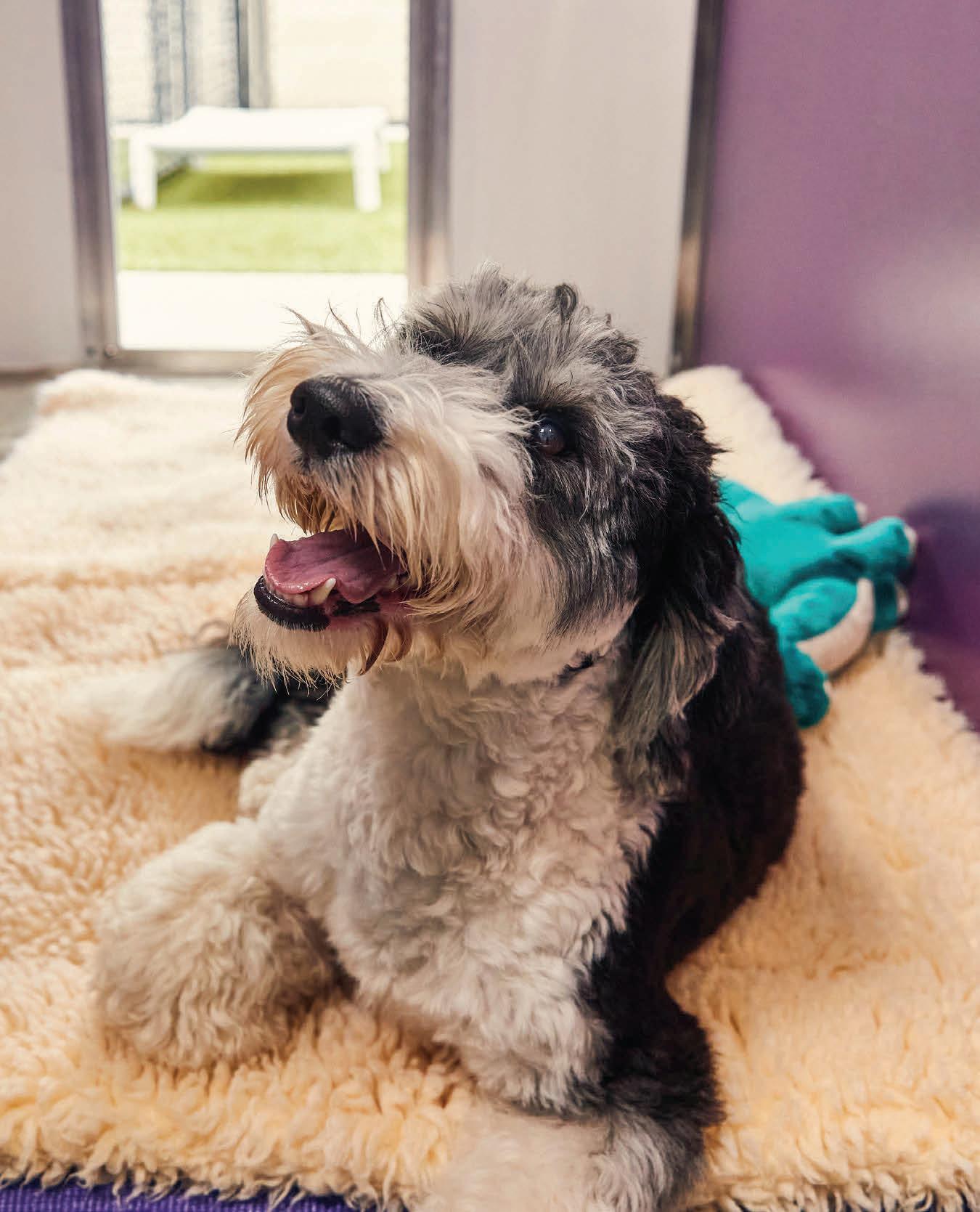
8531 Hufsmith Rd, Tomball, TX 77375
Call 832.559.2957 | Text 832.559.0337 thewoodlands.petsuitesofamerica.com
PETSUITES LONG MEADOW
5535 Meadow Ranch Pkwy Houston, Texas 77407 Call 346.439.1897 | Text 346.415.4500 longmeadow.petsuitesofamerica.com
PETSUITES ATASCOCITA
17730 West Lake Houston Pkwy Humble, TX 77346 Call 346.415.4906 | Text 346.415.5100 atascocita.petsuitesofamerica.com
PETSUITES PEARLAND
3205 Kirby Dr, Pearland, TX 77584 Call 832.856.0353 | Text 832.856.0455 pearland.petsuitesofamerica.com
PETSUITES SPRING RAYFORD
2825 Canyon Ranch Dr Spring, TX 77386 Call 346.220.6310| Text 346.808.4548 springrayford.petsuitesofamerica.com
PETSUITES SUGAR LAND
20430 SW Fwy, Richmond, TX 77469 Call 832.365.3159 | Text 832.945.1555 sugarland.petsuitesofamerica.com
PETSUITES SPRING KLEIN 6525 Louetta Rd, Spring, TX 77379 Call 346.220.6310 | Text 346.808.4548 Klein.petsuitesofamerica.com
PETSUITES CYPRESS
13010 Wortham Center Dr Houston, TX 77065 Call 832.497.4135| Text 281.640.0053 cypress.petsuitesofamerica.com
PETSUITES WESTHEIMER
13440 Westheimer Rd Houston, TX 77077 Call 3462972663 | Text 3466463700 westheimer.petsuitesofamerica.com
PETSUITES MISSOURI CITY
8320 Copper Creek Lane Missouri City, TX 77459
Call 346.257.2807 | Text 346.245.5531 missouricity.petsuitesofamerica.com
Your senior dog is truly a special member of your family. Looking at the distinguished silver threads of fur on his face and the wisdom in his eyes, it’s safe to say he’s come a long way from his younger days of getting into puppy mischief and eating your shoes.
As your beloved friend ages, he’ll look to you for special care to ensure he can comfortably do the things he loves to do with you and your family and continue creating a lifetime of cherished memories.
Caring for a senior dog involves being mindful of his overall health and comfort levels in day-to-day activities, so you can recognize signs of illness and promote the best quality of life.
As your dog enters his senior years, you may notice him start to walk a bit
more leisurely, respond to you a little more slowly, and enjoy more time lazily lounging in the sun.
It’s not always easy to tell the difference between subtle age-related decline and the emergence of a more serious illness. That’s why it’s a good idea to be familiar with the common conditions that affect senior pets and learn how to recognize potential warning signs.
Senior dogs can experience impaired mental function, similar to elderly humans with Alzheimer’s or dementia. Two common mental health conditions in senior dogs include:
A. Cognitive Dysfunction Syndrome
A progressive, evolving mental health condition associated with a series of changes that occur in the brain that can cause difficulty with thinking, recognition, memory, and learned behavior.
B. Dementia: A later stage of CDS associated with more severe mental health symptoms.
Oftentimes, signs of mental health
conditions are mistakenly chalked up to “old age.” However, these conditions are common in senior dogs. Fifty percent of dogs over age ten will exhibit one or more symptoms of CDS or dementia.

Osteoarthritis (or “OA”) is a degenerative joint disease that causes pain and decreased mobility in senior dogs. It’s caused by the deterioration of cartilage in your dog’s joints, which is unfortunately common after years of activity and adventure.
The signs of OA can be treated and managed, so your dog can continue living a comfortable, productive life with you. Here are the signs of arthritis in dogs as it progresses:
Early Stages
Reduced activity, Lameness or stiffness, Weight gain, Reluctance to jump or climb stairs, Slow to rise or difficulty lying down, Licking/chewing on the affected joint(s)
Late Stages
Persistent early stage symptoms, Lack of appetite, Muscle or weight loss, Pressure sores, Mental stress, Constipation, Excessive panting, Inability to stand up and/or accidents in the home
You’ve probably heard the importance of keeping your pet trim and healthy throughout his life, and it’s especially important in his old age. Overweight and obese pets are at increased risk of developing cardiovascular disease, diabetes, cancer, orthopedic disease, and more.
When you see your pet every day, it can be difficult to recognize when she’s gained a pound or two. But, in some cases, a pound or two can make a big difference. If your pet is at a healthy weight, you’ll easily be able to feel all of his ribs without seeing them. When viewed from the side, he’ll have an “abdominal tuck,” meaning there is a clear waistline.
As dogs advance in their years, they’re more likely to develop cancer. While there are many forms of cancer, many are treatable with timely intervention. Early detection gives your pet the best chance for a positive outcome. Keep an eye out for these five signs that may indicate cancer development.
Older dogs naturally slow as they age, but an abrupt decline in activity or appetite can indicate cancer in some cases. Cancer takes a toll on the body, often making your
pet feel weak and lethargic and stealing her appetite. Oral and abdominal masses can interfere with eating and digestion, also leading to a decreased appetite.
2. Unexplained weight loss
If your dog has a good appetite, he shouldn’t lose weight unless something is interfering with normal body function. While other diseases can cause weight changes, cancer is also a top culprit of unexplained weight loss.
3. Abnormal lumps and bumps
Not all lumps and bumps that pop up on your pet will be cancerous tumors; some may be benign masses. However, it’s a good idea to have all lumps and bumps checked out by your veterinarian, especially if they appear suddenly, ooze, or grow rapidly.
4. Vomiting and diarrhea
Although vomiting and diarrhea are two common signs of many illnesses in pets, they’re often symptoms of forms of cancer as well.
5. Limping
Your dog’s limp may be caused by OA or other joint or muscular conditions, however, it may also be an indicator of bone cancer, which is common in large dogs and often very painful.
While all of these conditions involve symptoms ranging from mild to severe, there are a few signs and behaviors that signal a medical emergency regardless of your dog’s diagnosis. Here are the symptoms which require immediate veterinary assistance:
» Difficulty breathing
» Prolonged seizures
» Uncontrollable vomiting/diarrhea
» Sudden collapse
» Profuse bleeding – internal or external
» Crying or whining from pain
As your pet reaches his golden years, he deserves a gold-standard of care. He’ll appreciate the extra love and any lifestyle changes you make to accommodate his evolving health and wellness. Plus, your dog’s calmer demeanor and new appreciation for more R&R means the door is open for you to spend more quality time together and create fun memories.
Practice little activities to keep your dog’s mind sharp in his senior years. Remember, the brain is a muscle and it can benefit greatly from daily exercise. Incorporate activities into your routine to add a stimulating mental nudge to your senior pet’s day:
» Serve meals by using food puzzles
» Learn new tricks and commands
» Rotate toys to keep interest
» Change your walking routine by hiking a different trail or exploring a new part of town
You know your senior pet better than anyone else, and you likely spent many years learning his favorite things in life. Set aside time to do the things you know will put a smile on your favorite graying face – like a trip to the beach, a peaceful morning hike, or fetch with his treasured frisbee.

While it’s tempting to spoil your senior with extra snacks and tasty treats, pay close attention to his nutritional needs. Senior dogs should maintain a healthy weight to promote optimal
wellness. Also, it’s a good idea to make sure he’s eating the correct amount and type of food for his unique and evolving health goals.
If you notice your pet is experiencing joint pain or decreased mobility, try to make your home as accommodating as possible. Consider added measures like:
» An orthopedic bed
» A safe heating pad designed for dogs
» Ramps for vehicles or furniture
Because your senior dog may be more prone to illness and joint pain, routine vet visits become increasingly more important with age. Keeping him up to date on lab work and any recommended diagnostic testing is a great way to catch any signs of disease early and begin treatment as soon as possible. Plus, your dog’s veterinarian can provide suggestions to help keep him comfortable and well in his golden years. (Just remember to give him an extra special treat after he’s done with his visit).
Whether your senior is newly adopted or a lifelong companion since puppyhood, he brings a great sense of calm and wisdom into your home. Senior dogs are often focused, wellmannered, and appreciative of all the simpler things in life.
Your dog rewarded you with companionship, love, and affection, and now is your chance to return the favor by ensuring his final chapter is the best chapter and paying extra close attention to his health and wellness.
Clients are often surprised to know that the majority of pets that are diagnosed with fleas, intestinal worms, heartworms, and other parasites are indoor only or indoor mostly pets! Heartworms in particular are very difficult and costly to treat. Heartworms are transmitted by mosquitoes which we often find indoors even during the winter months in the Houston area. Those heartworms create damage to the lungs and heart of infected pets. This is not limited to dogs because even cats can contract heartworm disease. The good news is that many external and internal parasites can easily be prevented by one monthly dose of parasite prevention. Be sure to discuss a yearly monthly preventative plan for your pet with your veterinarian
Over 75% of pets over the age of 3 have dental disease. In addition to bad breath, untreated dental disease can lead to mouth discomfort, abscesses, and tooth loss. Furthermore, bacteria associated with dental disease can result in long term internal organ damage such as heart, kidney, and liver disease. Plaque, tartar and gingivitis are often the tip of the iceberg when it comes to dental disease. It is very important for your pet to have a home dental care plan and a sedated comprehensive oral exam with appropriate treatment as indicated

too common in our profession. Veterinary medicine is recognizing the impact of compassion fatigue, bullying, and other negative impact mental health issues. With emphasis on well-being emerging in our profession, clients who display ill-mannered behaviors are now being quickly dismissed from practices. by your veterinarian.
Our support staff is the heartbeat of our profession. They are the ones who do the most work for our clients whether it be cuddling a nervous pet or answering calls from an anxious owner. This work can be very challenging with training often limited to on the job experience. Stories of abuse of staff such as screaming at receptionists or mistreatment of technicians are all
It can be frustrating not being able to get into your vet when needed or having to spend a portion of your day at the vet clinic. We try to make our lobbies calm and serene for client comfort. However, behind the lobby in the areas that clients don't often see is a busy and bustling clinic. Pets being prepared for surgery, prescriptions getting filled, follow up phone calls, lab analysis, and other procedures may all be going on. Vet staff are working tirelessly to see as many patients as safely and efficiently as possible while often short-staffed. We need your patience, understanding, and grace as we try to do so.









Inflammation in the joints causes pain and cartilage damage which can lead to stiffness and decreased mobility.
Ask
Cypress VCA TELGE ROAD ANIMAL HOSPITAL 11430 Telge Road Cypress, TX 77429
281-955-9797
VCAtelgeroad.com store.VCAtelgeroad.com
Houston VCA ASHFORD ANIMAL HOSPITAL 12633 Whittington Houston, TX 77077
281-497-3917
VCAashford.com store.VCAashford.com
Houston VCA COUNTRYSIDE ANIMAL HOSPITAL 2211 FM 1960 East Houston, TX 77073
281-443-7297
VCAcountryside.com store.VCAcountryside.com
©2016
Houston VCA SPRING BRANCH ANIMAL HOSPITAL 10109 Long Point Road Houston, TX 77043 713-461-1121
VCAspringbranch.com store.VCAspringbranch.com
Katy VCA KELLIWOOD ANIMAL HOSPITAL 960 S. Fry Road Katy, TX 77450
281-492-2780
VCAkelliwood.com store.VCAkelliwood.com
Kingwood VCA KINGWOOD ANIMAL HOSPITAL 2526 Green Oak Drive Kingwood, TX 77339
281-358-3146
VCAkingwood.com store.VCAkingwood.com
Lake Jackson VCA LAKE JACKSON ANIMAL HOSPITAL 210 That Way Lake Jackson, TX 77566 979-297-3044
VCAlakejackson.com store.VCAlakejackson.com
Pasadena VCA ANIMAL MEDICAL CENTER OF PASADENA 5018A Fairmont Parkway Pasadena, TX 77505
281-487-8233
VCApasadena.com store.VCApasadena.com
Spring VCA SPRING ANIMAL HOSPITAL 1811 Spring Cypress Spring, TX 77388
281-353-5167
VCAspring.com store.VCAspring.com
Spring/The Woodlands VCA WOODLANDS ANIMAL HOSPITAL 428 Rayford Road Spring, TX 77386
281-367-7553
VCAwoodlands.com store.VCAwoodlands.com
Sugar Land VCA SOUTHWEST FREEWAY ANIMAL HOSPITAL 15575 SW Freeway Sugar Land, TX 77478
281-491-8387
VCAswfreeway.com store.VCAswfreeway.com
Shop at our online store!
Texas City
VCA MAINLAND
ANIMAL HOSPITAL
3015 Palmer Highway Texas City, TX 77590
409-948-8401
VCAmainland.com store.VCAmainland.com
Tomball VCA TOMBALL VETERINARY HOSPITAL 28800 Tomball Pkwy Tomball, TX 77375 281-351-5441 VCAtomball.com store.VCAtomball.com






As we celebrate the Year of the Rabbit, many animal lovers may find themselves curious about bunny ownership and what to expect when introducing one to your home and family. Understanding your rabbit is an important part of their ongoing care and growing your relationship with them.

While rabbits have been bred and domesticated over hundreds of years, they still have natural instincts. As prey animals, rabbits are often nervous in busy or loud environments and generally do not like to be handled. They may associate being lifted off the ground with being snatched by a predator, so it’s recommended that you pick them up as infrequently as possible. It is also important to remember
Melanie O’Neill BunnyBuddies.orgthat rabbits are not suitable pets for small children and should always be a parent’s responsibility, with more mature children supporting the rabbit’s care.
Rabbits have a very special digestive tract, and a high-fiber diet of quality hay and leafy greens is crucial to their overall health. Unlike cats and dogs, rabbits have a one-way system, meaning they cannot vomit. This inability to regurgitate can cause serious health issues for a rabbit that eats something it shouldn’t, and can even be fatal. For these reasons and more, rabbits are considered an “exotic” animal and require care from a specialized vet — and are not seen by all clinics. Be sure to find a knowledgeable provider in your area. A proper environment is just as important as health and diet. Domesticated rabbits are temperature-sensitive and should live indoors, away from predators and pests, in a controlled climate. It is essential that your rabbit has an
appropriate amount of space to stretch out, relax and enjoy enrichment activities. While common misconceptions may have you thinking that a cage or hutch is enough space for a rabbit, consider this comparison — how would you feel being stuck in your room all the time? Bunny Buddies requires a minimum of 16 square feet for living quarters with an additional, larger area available for daily exercise.
Welcoming a rabbit into your home can be a rewarding and memorable experience, but it is important to have strong fundamental knowledge before making this long-term commitment: healthy rabbits live an average of 8-12 years, after all! If you are interested in learning more about rabbit care, fostering opportunities, and adoptions from Houston-area rescue Bunny Buddies, visit their website at bunnybuddies.org or find them on social media: @bunnybuddieshouston.
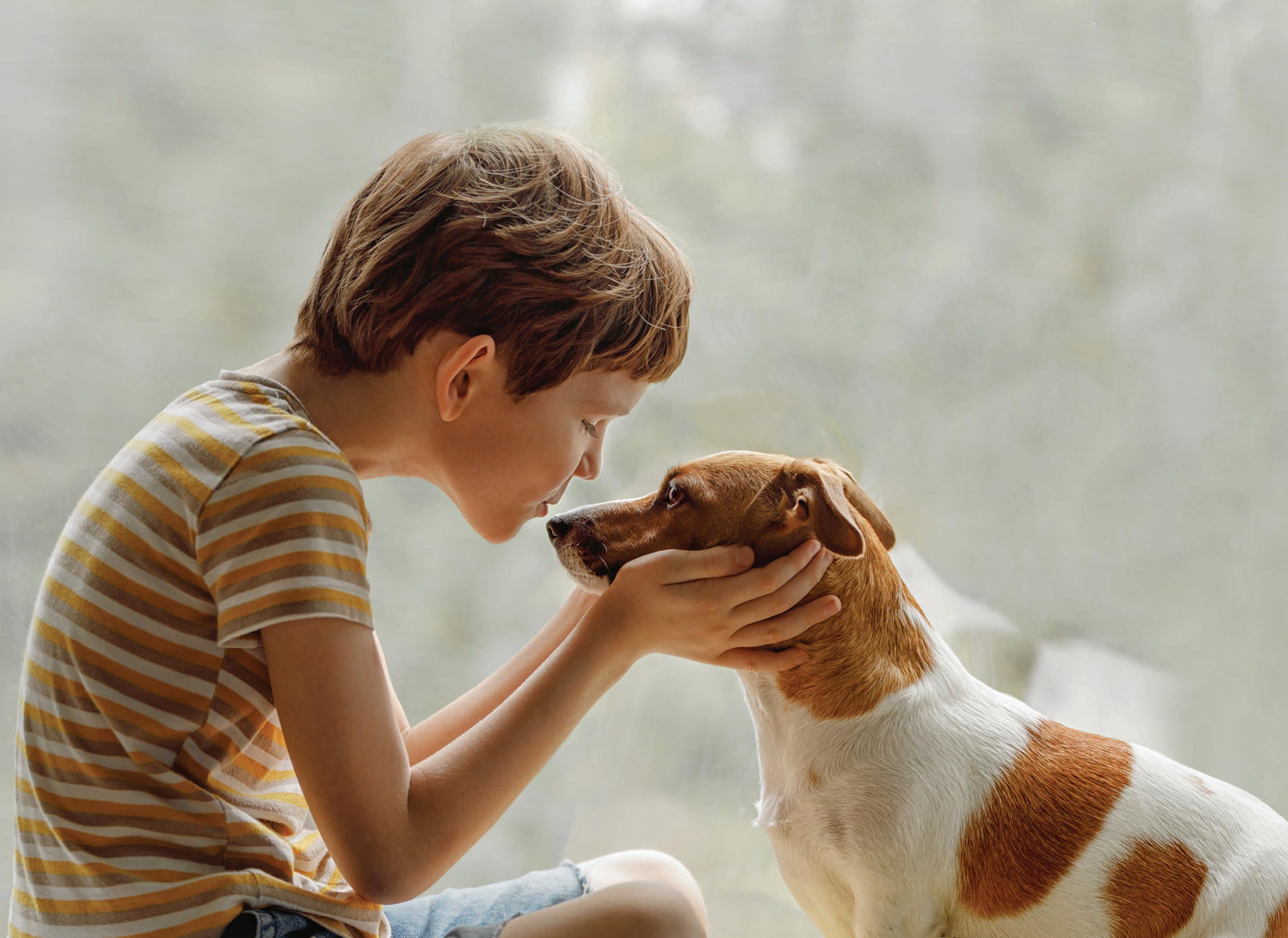





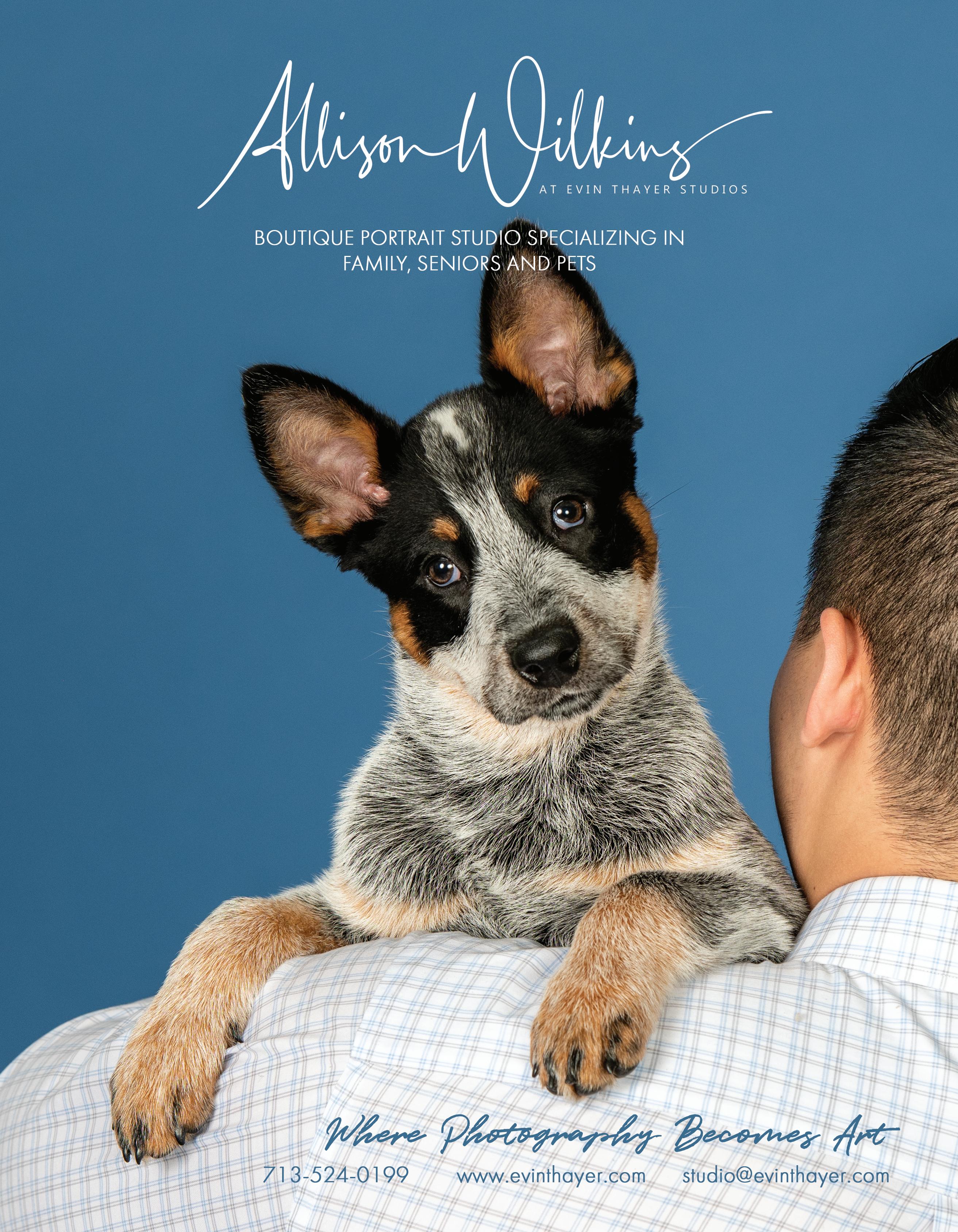






If you ever want to know what it’s like to be misunderstood, feared, and even hated, just ask a snake! Among the least popular of animals, snakes get a really bad rap because they are a very different type of reptile. They have no arms or legs, can crawl most anywhere and over most any surface, they move very fast, and in some cases, even kill. While we as humans typically prefer the cuteness of a mammal with limbs, such as a dog or cat, the importance of the snake in our environment is vital and therefore we need to live in harmony with these creatures that have inhabited the earth for nearly 130 million years.
I recently had the pleasure of visiting the Houston Humane Society Wildlife Center, previously known as TWRC, to learn more about two of their resident reptiles, Boss Hogg the Western Hognose Snake and JJ Watts the Bullsnake.

Anyone that knows me is aware that snakes are not my favorite animal. I truly respect them and understand their value, but let’s just say I prefer to keep my distance! I recently moved to acreage where I’ve had quite a few snake encounters, several leaving me in tears, mostly because of the “startling” affect and the fact they were very close to the house. This scenario is of course quite dif-

is a monthly feature written by our Editor with the mission of educating the public on the value of all species.
"Our task must be to free ourselves by widening our circle of compassion to embrace all living creatures and the whole of nature and its beauty."
EinsteinPhoto By Allison McPhail of Evin Thayer Studios Boss Hogg is a small Western Hognose snake, approximately 13-15 yrs. old.
ferent than the controlled environment of our photoshoot, but even so, it took a lot of my “spirit” to touch or hold these two snakes. Their markings are really fascinating to look at but there is something about when they begin to slither that really gets me LOL!
Helping to ease my anxiety, Education Manager Samantha Norris and Education Animal Coordinator Claire Schwabenland gave me encouragement and filled me in on the personalities and background of each snake as they coached me through handling. Both snakes are ambassadors and are often taken to public engagements for educational purposes. Here’s what I learned about each:
1. Boss Hogg was donated to the center by the parents of a student who was unable to take him to college. Both Western and Eastern hognose snakes are native to Texas. They are notable for their elaborate defensive displays, rear-fangs, and mild venom. While this venom is classified as "medically insignificant" to humans, it does help to make them very effective predators of frogs and toads. When threatened, hognose snakes try to intimidate predators by hissing and flaring out their head and neck in a behavior called "hooding." If this display fails to deter the predator, the hognose goes belly-up in a dramatic death scene, opening their vent to release smelly musk and letting their tongue hang out. Such drama!
2. JJ Watts stays with the center on permanent loan from one of their reptile rehabbers. Bullsnakes are common non-venomous snakes that range across the Western half of Texas and have evolved specialized anatomy and behavior to discourage predators. When threatened or harassed, they will coil their bodies, raise their heads, and emit a loud hiss while rattling their tail. The modified structure of their glottis helps amplify and gives a puised quality to the sound. This dramatic defensive display often causes people to mistake them for rattlesnakes. With their large size and high activity level, bullsnakes can make a significant improvement in a serious rodent infestation. They contribute to a healthy ecosystem by eliminating a large number of potentially disease-carrying mice and rats.
As both predator and prey, snakes are highly important to biodiversity on earth. Snakes are a food source for birds, mammals and other reptiles. Conversely, they feed on birds, mammals, amphibians, fish and insects. Many species of pests, such as rodents and slugs, are eaten by snakes.
Without this “balance of nature,” most pest species could overpopulate the landscape and cause considerable damage to homes, gardens and farms. Rodents have a tendency to spread diseases as well. So, you can see the immense benefit snakes provide and although some folks find them scary and creepy, remember they are typically harmless if left alone and prefer to avoid people. Unfortunately, snakes are often unnecessarily killed out of fear or misunderstanding. If you encounter a snake, move away and let it move on or call a snake catcher if necessary. With all the good that snakes truly do, it is more important than ever that we do our best to keep them around in order to maintain the biodiversity of the planet!
To learn more about Houston Humane Society Wildlife Center, visit them online at TWRCwildlifeCenter.org.
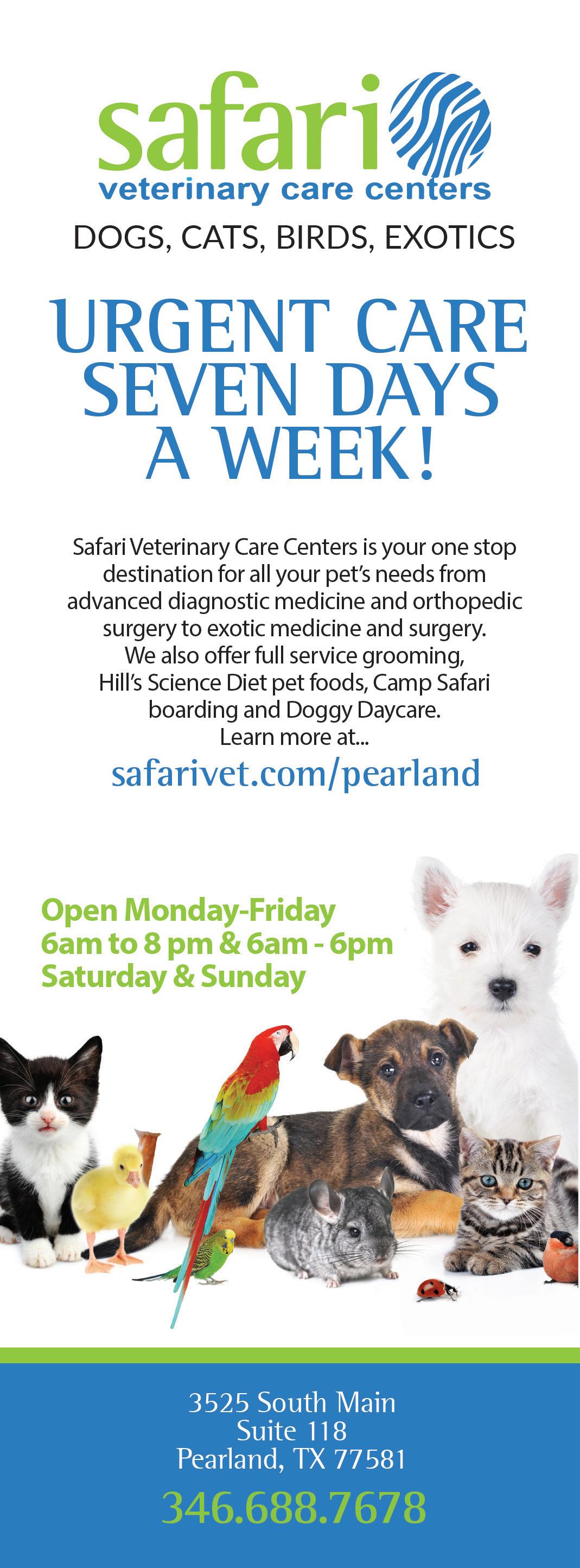
As appreciative supporters of nature and wildlife, we at Houston PetTalk want to promote education and conservation of the world’s animal population. Each month we bring you information on conservation efforts that are of special interest or have some connection to Houston through the Houston Zoo. This issue, we highlight a look the zoo's Centennial Campaign success. Look for other upcoming conservation stories so that you too can help save a species.
The Houston Zoo’s centennial fundraising campaign “Keeping Our World Wild” has exceeded the targeted goal of $150 million. This accomplishment is a testament to the generous support of the community and is a significant milestone in the Zoo's history.
The Houston Zoo is dedicated to education, conservation, and the well-being of all its animal residents and has pledged to devote $5 million from the campaign to support wildlife conservation projects related to the new exhibits, in Texas and beyond. To date, the campaign has secured 1,001 gifts totaling $151,693,153.32 from 707 donors.
In celebration of this achievement, the Houston Zoo is pleased to announce the opening date for its new Galápagos Islands exhibit, Friday, April 7.

"We are deeply grateful for the exceptional support we have received during our centennial campaign," stated Lee Ehmke, President and CEO of the Houston Zoo. "The opening of
our Galápagos Islands exhibit will be a momentous occasion, and we are excited to introduce these remarkable animals and places they represent to the community. It is our hope that this exhibit will inspire visitors to learn more about conservation and the vital role the Zoo plays in protecting these species for future generations."
The Zoo is happy to introduce some of the new animal residents moving into the exhibit. The Zoo’s colony of California sea lions will grow from five to nine sea lions. The four new female sea lions come from a California rescue facility. Seven additional tortoises will join the Zoo’s three resident tortoises. Two black-tip reef sharks, three bonnethead sharks and a green sea turtle will highlight the stunning 270,000-gallon One Ocean aquarium at the center of the Galápagos Islands complex. A colony of 15 Humboldt penguins will make the trip to the Bayou City from several zoos and aquariums around the country.
Animals native to the Galápagos Islands
are strictly protected and because of this status, closely related species will stand in for their protected counterpart in the Zoo’s new habitat. By experiencing these animals up close, guests will gain an appreciation of their connection to our shared ocean and how we can all help protect animals in the wild.
The funds raised through the centennial campaign will be utilized to support the construction of new exhibits and the care and protection of animals at the Zoo and in the wild. So far, the campaign has contributed to the opening of The Hamill Foundation Black Bear Exhibit, Cypress Circle Café, Kathrine G. McGovern Texas Wetlands, a renovated orangutan exhibit, and the award-winning South America's Pantanal. After the Galápagos Islands exhibit opens, the Zoo will begin a complete transformation of its bird facilities into a state-of-the-art Birds of the World exhibit complex.


